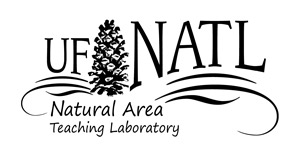This inventory of lichens in the various ecosystems of the NATL was conducted by Biology graduate student Barry Kaminsky, with his project advisors being Dr. Matthew Smith and Dr. Stuart McDaniel. The inventory took place between January and July of 2015. A nontechnical field-oriented key was created for the common lichens in NATL, with pictures taken to document each species. The project was supported by a $500 NATL Minigrant. The team’s final report is here.
Bulbothrix isidiza
Habitat: In NATL, this species is found on Pinus bark in the hydric forest. It may also be present in the mesic forest.
Key Characteristics: This species has bulbate cilia (meaning base of cilia is swollen or enlarged). However, often this is not readily seen because the cilia are fragile and only the bulbate base is present. The lobe margin on the upper surface has a brownish tint which helps to narrow it down to Bulbothrix or Canoparmelia. The lobe shape is different between the two: the lobe edges of Bulbothrix are more curved than Canoparmelia. There are four species of Bulbothrix in Florida. |
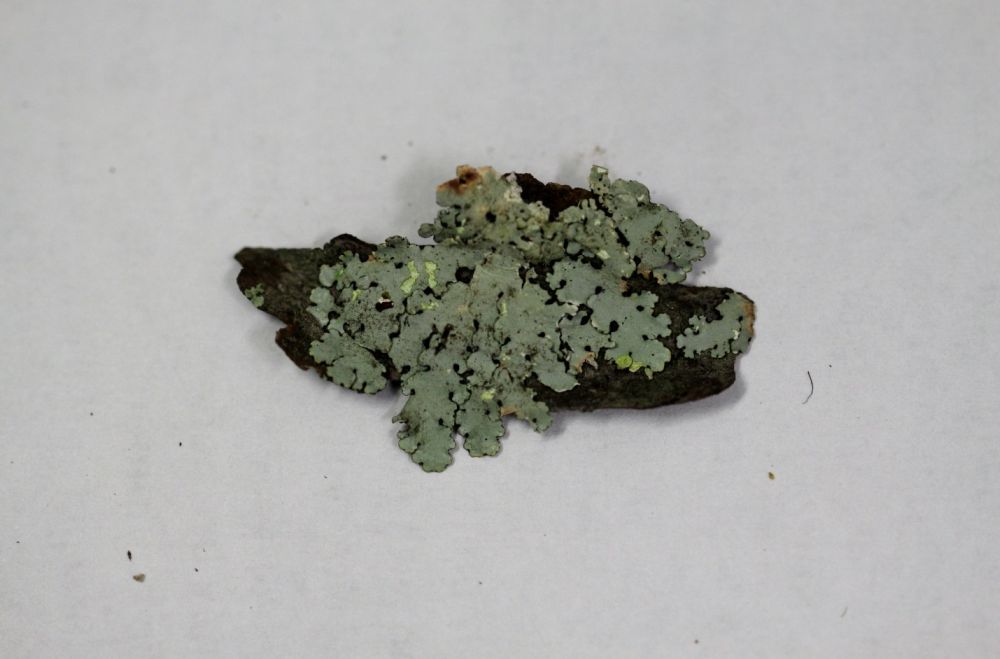 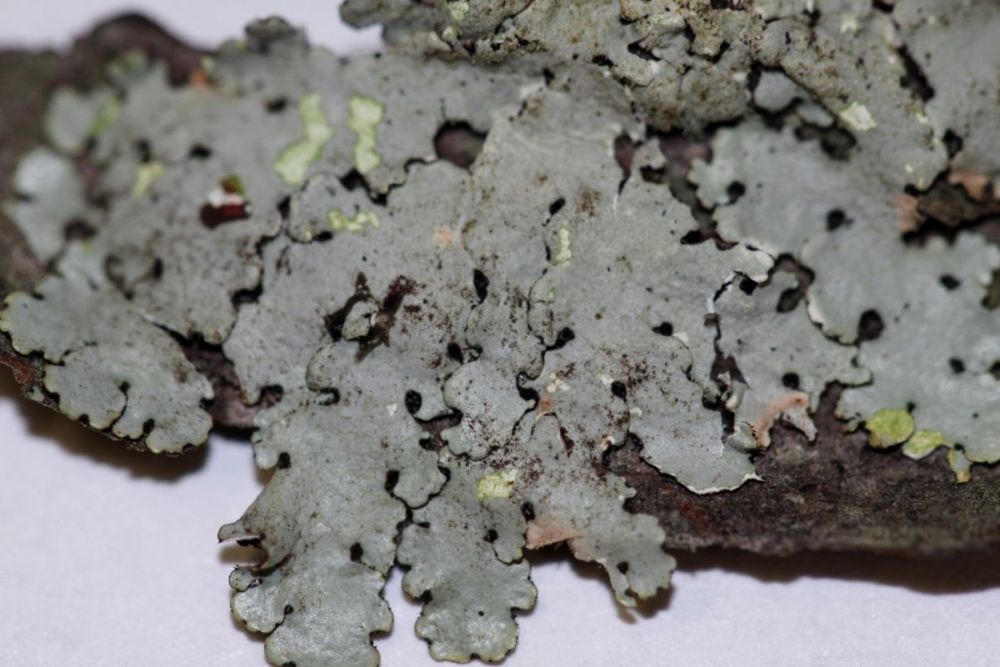
|
Canoparmelia amazonica
Habitat: In NATL, this species is found in upland mesic and xeric hardwood and Pinus forests and occasionally in the hydric forest.
Distinct characteristics: This species has isidia, a black lower surface that extends to the lobe tips. Also the thallus is not maculate and the medulla is KC+pink. Canoparmelia salacinifera looks similar but its medulla is K+ yellow turning to red. Canoparmelia caroliniana has maculae.
Cool Fact: Many lichen species contain secondary chemicals, which are distinguishable by spot tests and thin layer chromatography. These chemicals are often important to delineate species. |
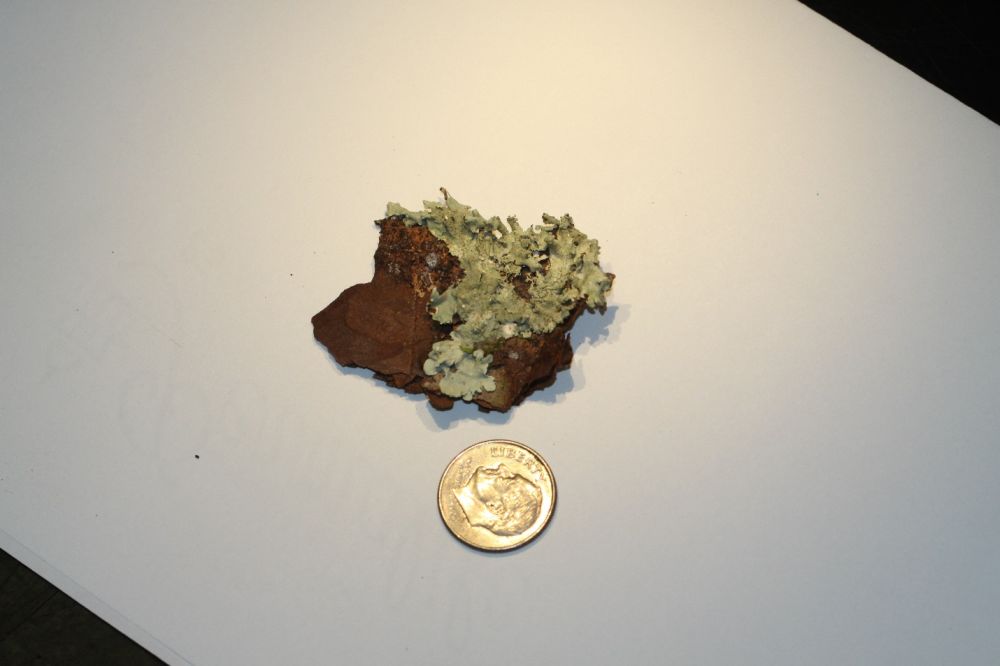 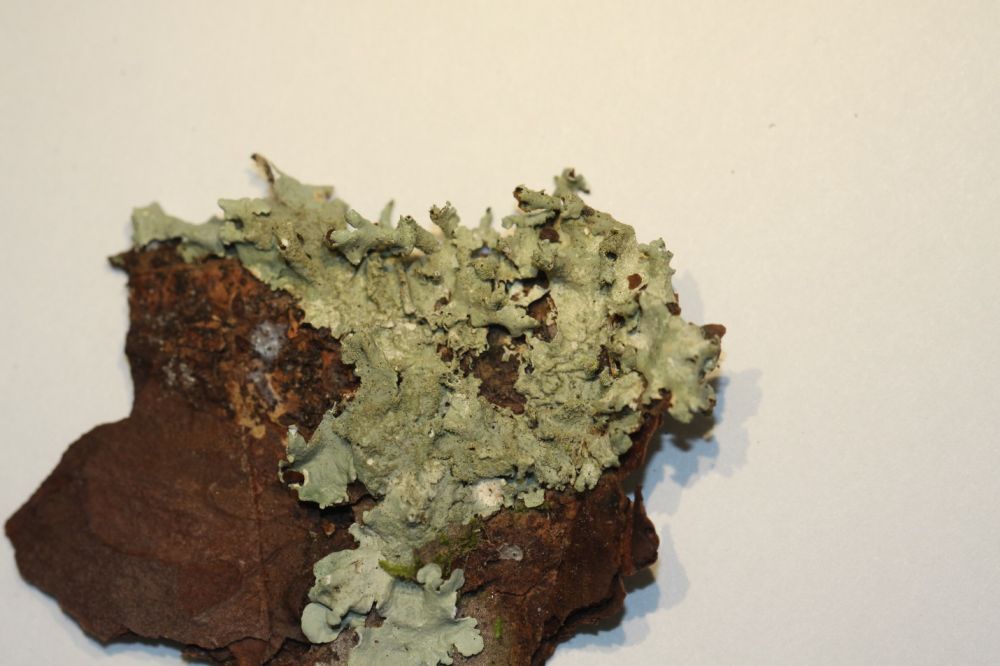
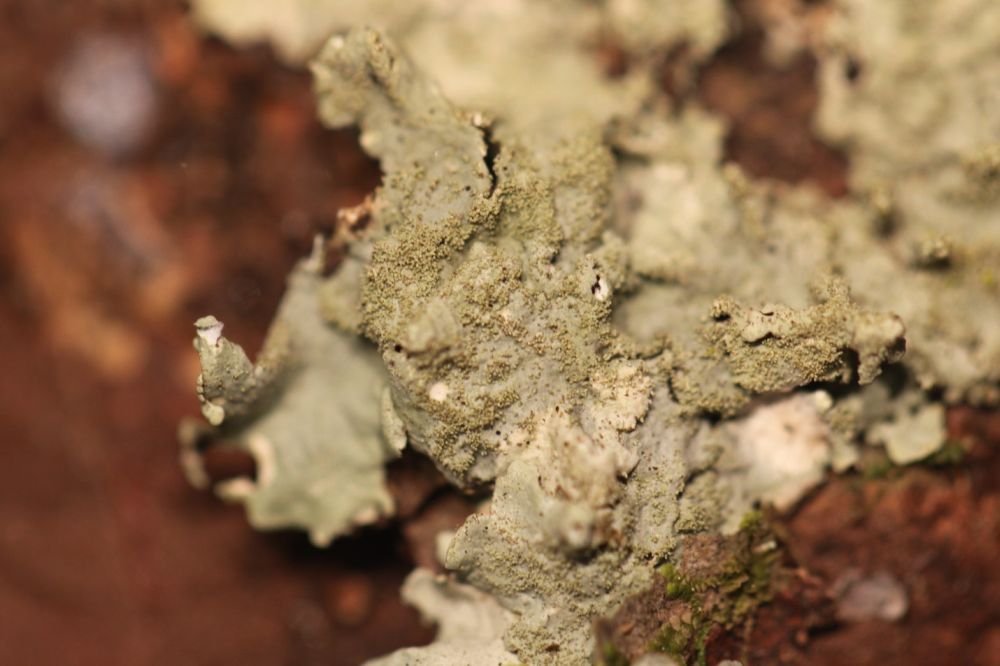 |
Canoparmelia caroliniana
Habitat: In NATL, this species is common in upland mesic and xeric hardwood and Pinus forests and occasionally in the hydric forest.
Distinct characteristics: This species has isidia. The upper surface is strongly maculate while the lower surface is blackish brown to black. However the margin of the lower side (closer to the lobe tips) is pale brown. |
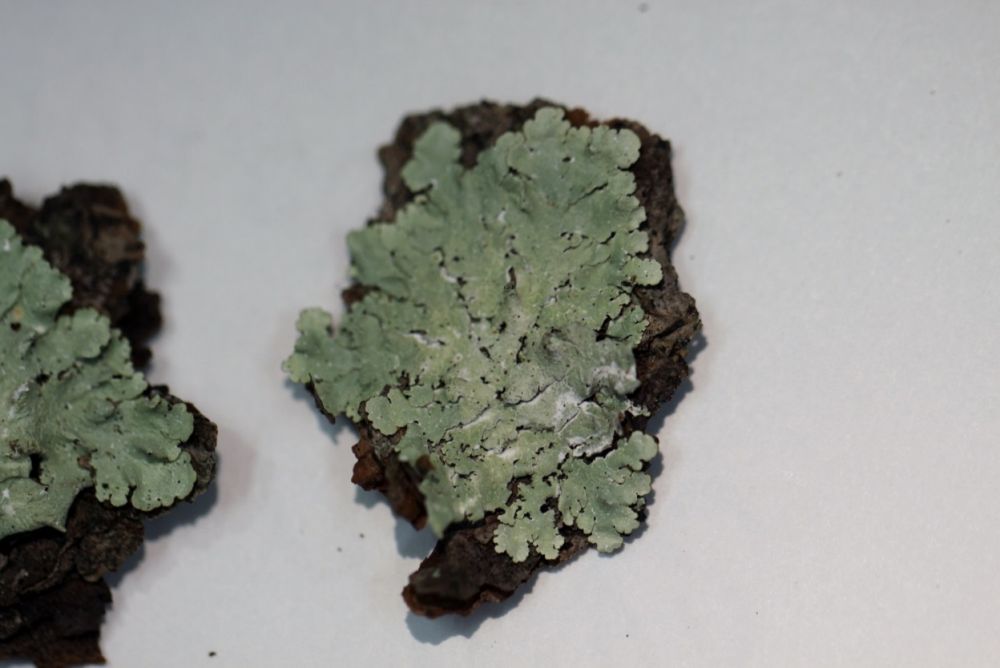 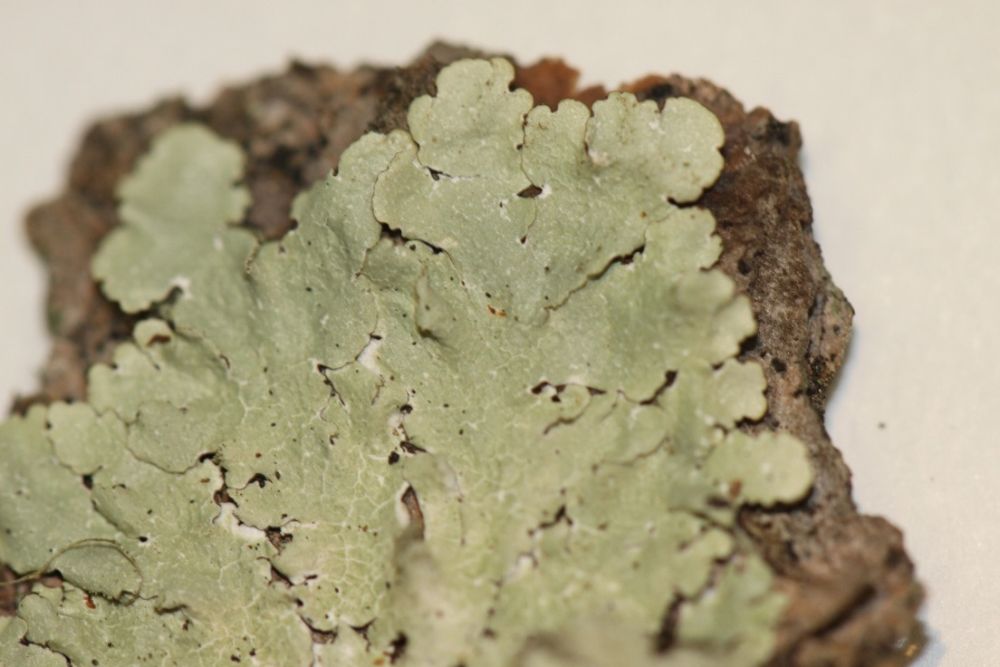
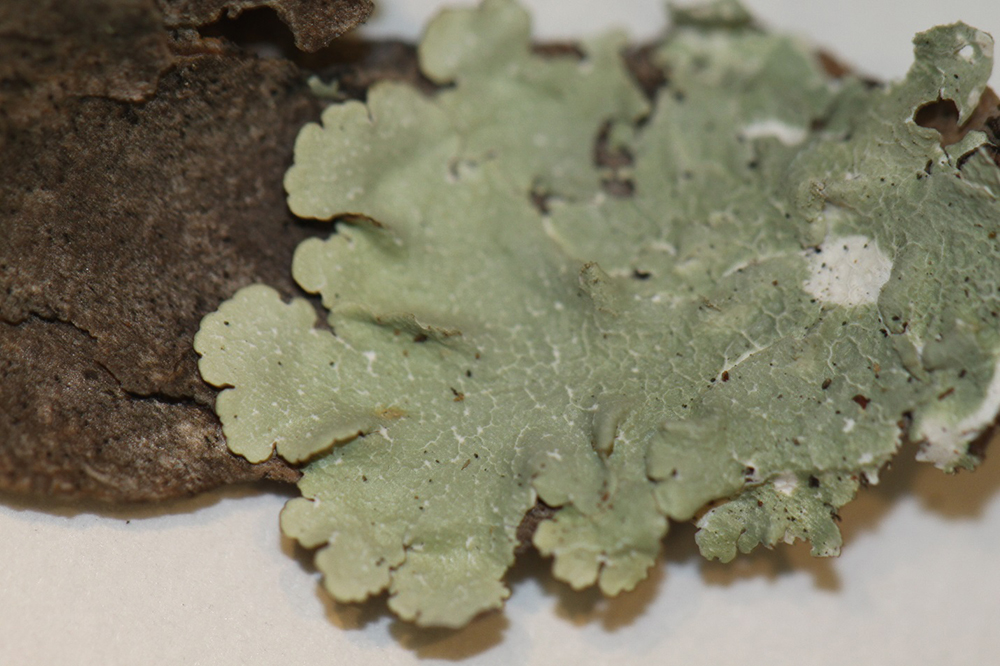 |
Canoparmelia cryptochlorophaea
Habitat: In NATL, this species is common in upland mesic and xeric hardwoods and Pinus forests, and occasionally in the hydric forest.
Distinct characteristics: This species has granular or warty soredia on raised portions of the thallus. No other species has this characteristic. See C. texana, below which is also present at NATL. |
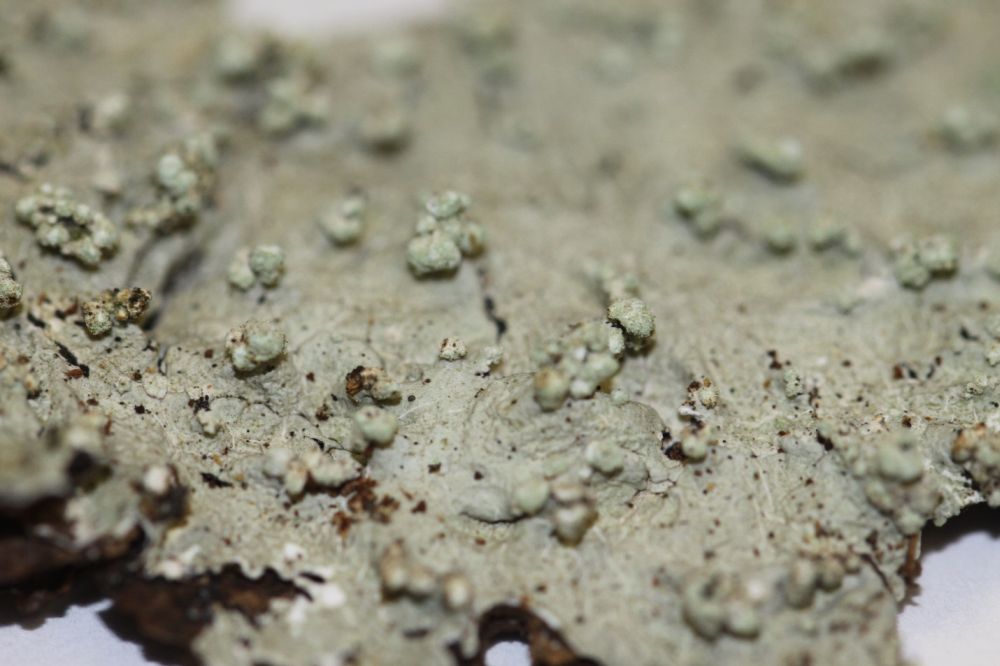 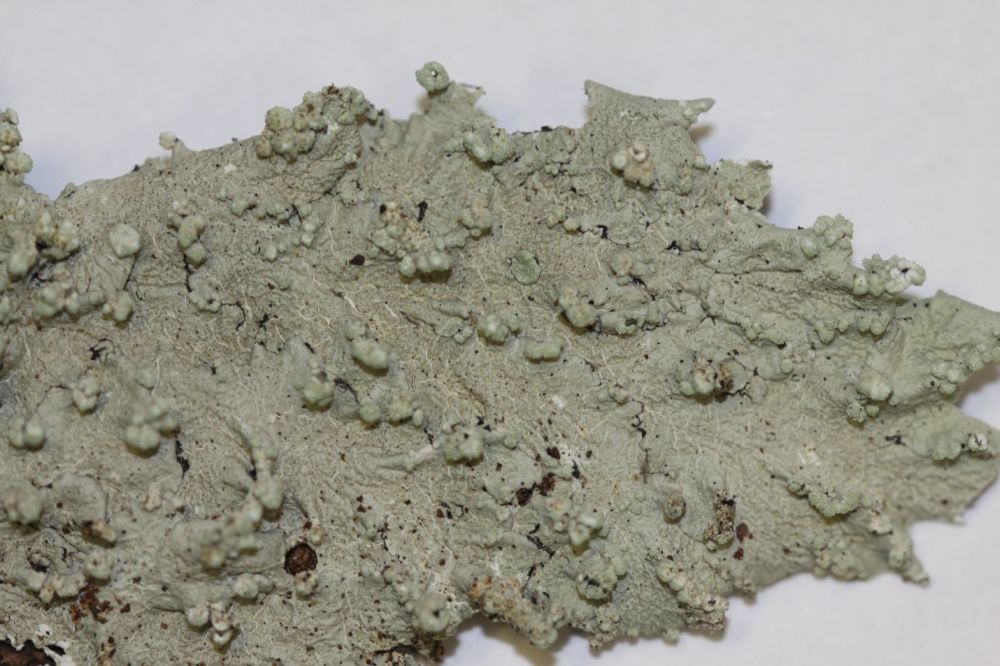 |
Canoparmelia texana
Habitat: In NATL, this species is found in mesic and xeric hardwood forests.
Distinct characteristics: This species looks similar to other Canoparmelia species, especially C. cryptochlorophaea. However the soredia are not on raised portions of the lobe. |
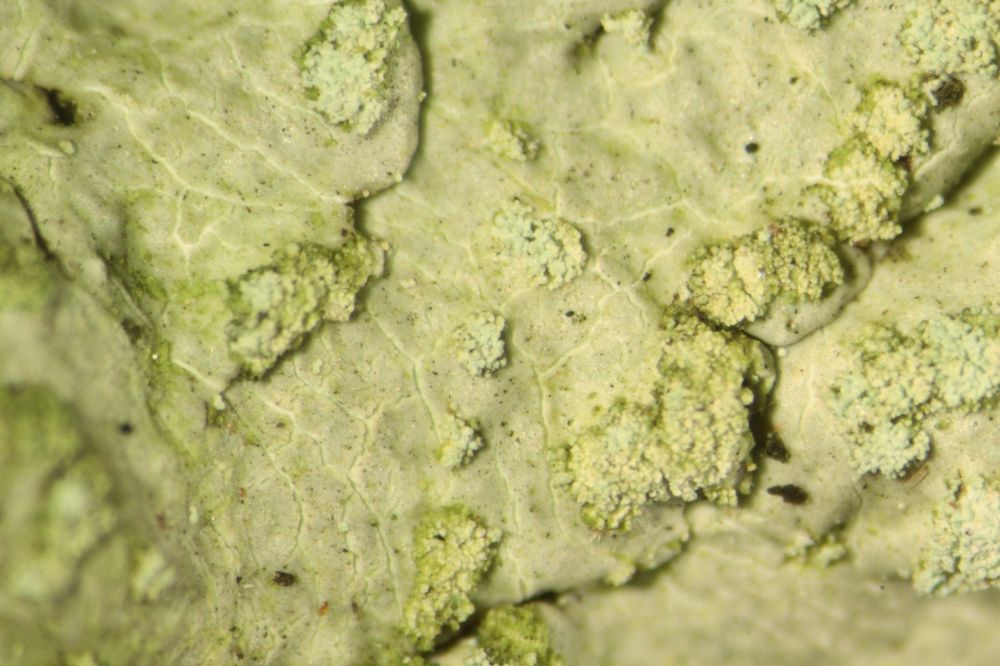 |
Chrysothrix sp.
Habitat: In NATL, this species is very common on Pinus and uncommon on hardwood trees. The genus is common in xeric forests and is uncommon in mesic forests.
Distinct characteristics: This is the only lichen genus in Florida that has small, sulphur yellow, circular (sorediate) masses and lacks an outer cortex.
Cool Fact: Many members in this genus are not known to reproduce sexually. It is an enigma how these species survive. |
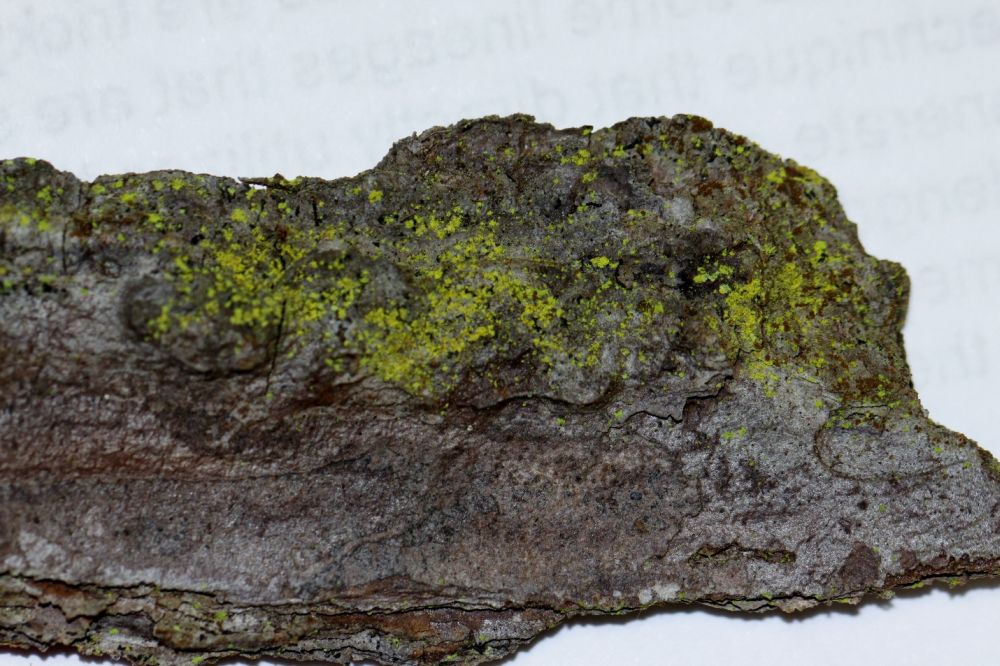 |
Cladonia didyma
Habitat: In NATL, this species is found in mesic and xeric hardwood forests growing on palm trees or slowly decaying dead wood.
Distinct characteristics: It is easy to identify Cladonia to genus, but difficult to identify to species. It is dependent on secondary chemicals and a range of morphological characteristics that may or may not be present in every specimen. There may be additional species of Cladonia in NATL.
Cool Fact: Some species of Cladonia are called reindeer moss, and are a winter subsistence food for reindeer and elk. |
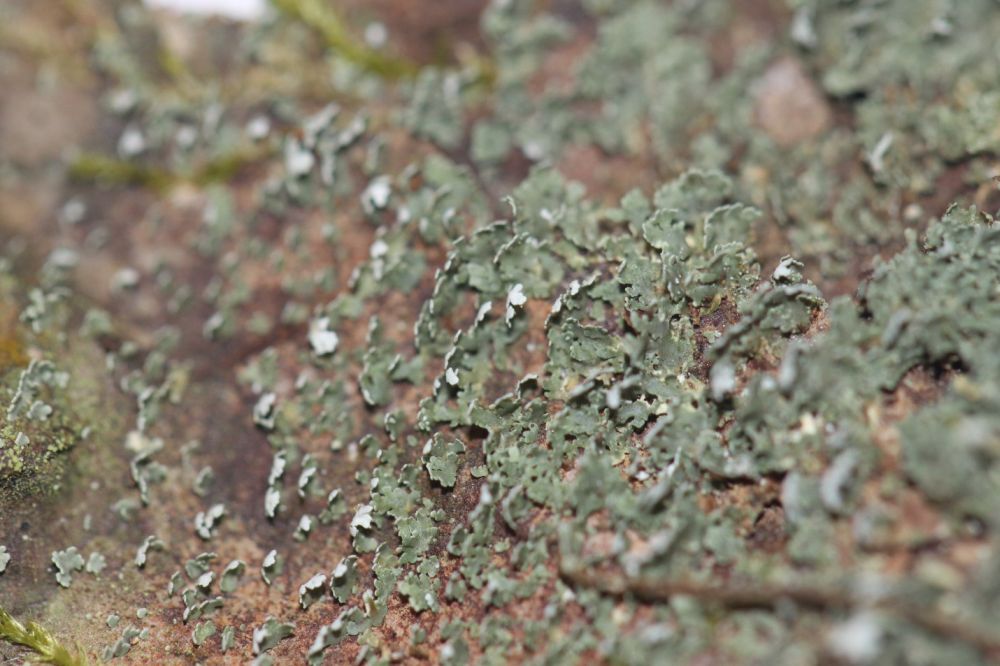 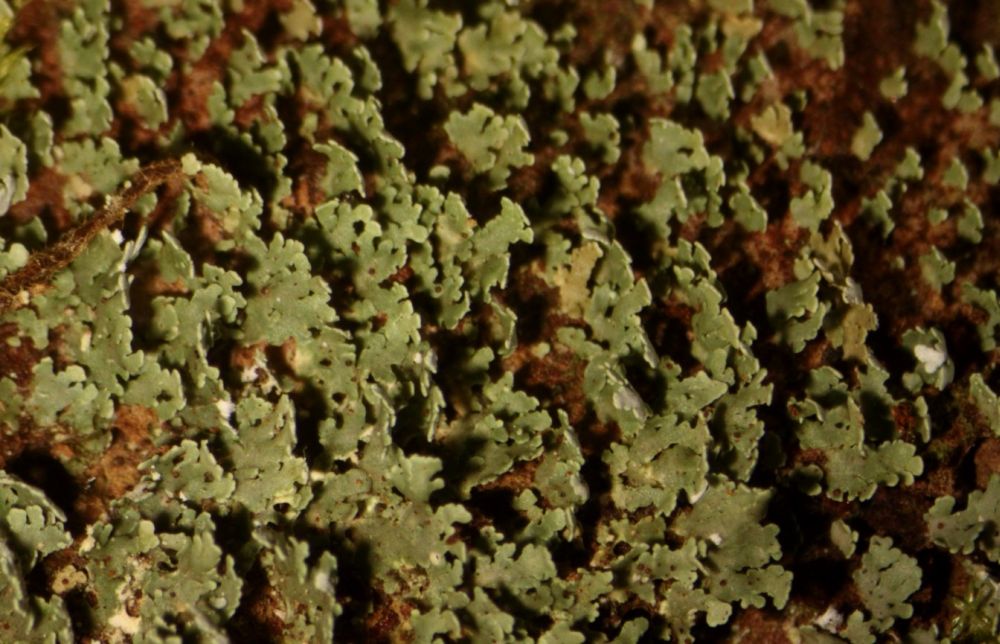
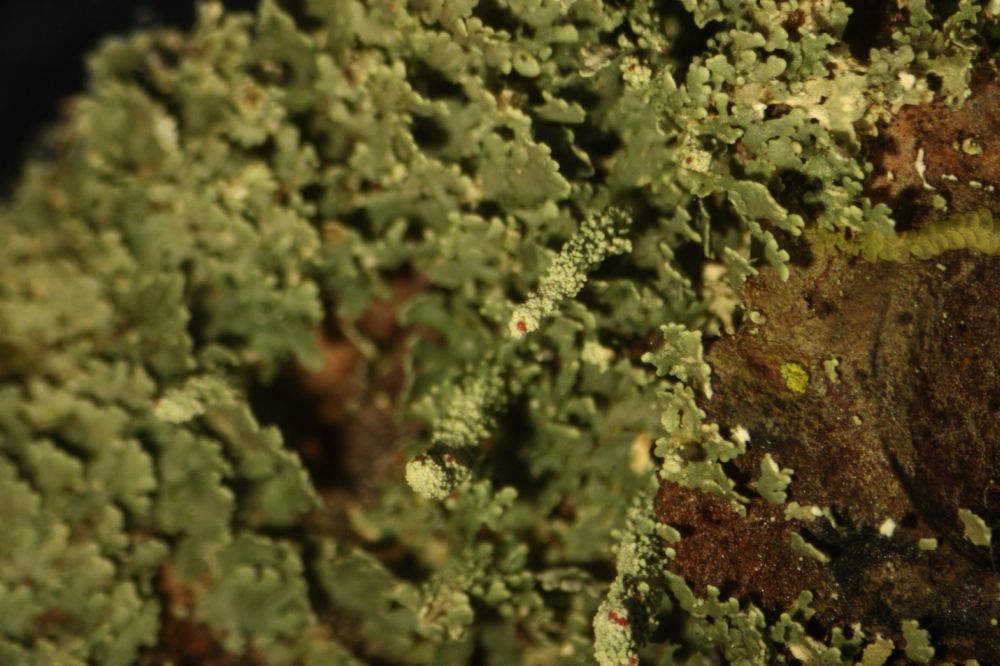 |
Cryptothecia striata
Habitat: In NATL, this species is found in xeric to hydric hardwood forests.
Distinct characteristics: This species is a white crustose lichen, with a white margin and slight greenish blue interior.
Cool Fact: This is one of the most common large crustose lichens at NATL. |
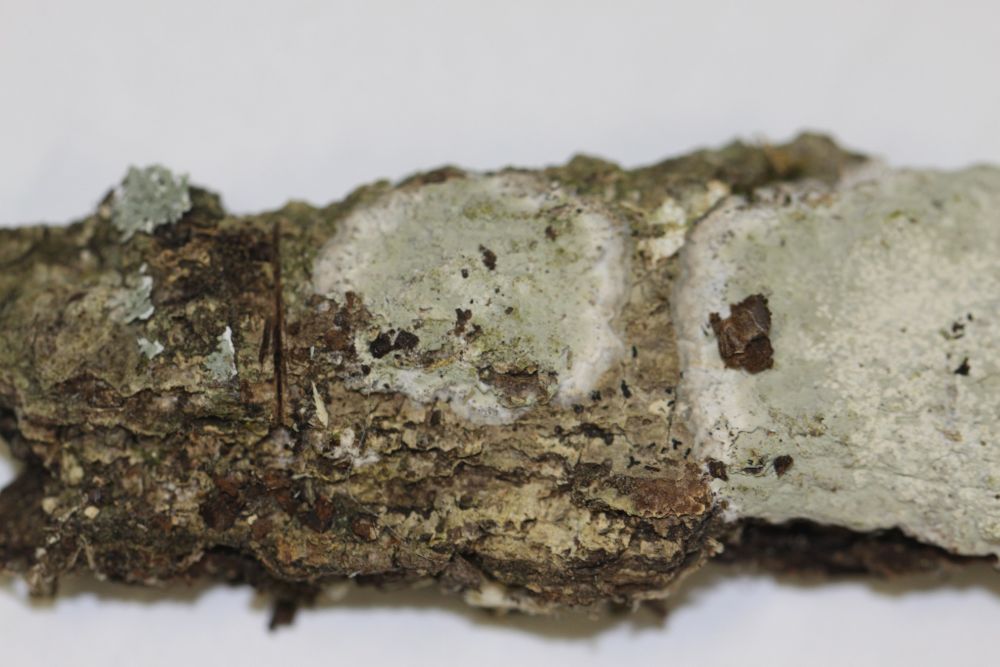 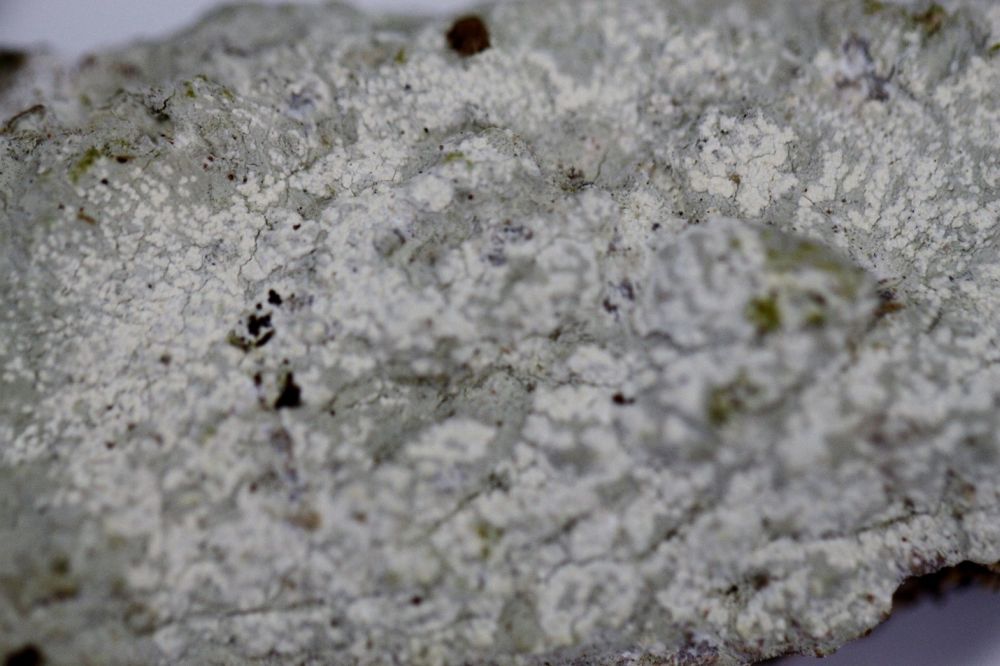 |
Dirinaria picta
Habitat: In NATL, this species grows in xeric to hydric forests, and seems to prefer lots of sun. This species is common in NATL mesic and xeric forests, rare in hydric hardwood forests.
Key Characteristics: This species has soredia masses that are circular (pustulate) in shape. The species lacks rhizines (root like structures on the lower side). Also the lower side is entirely black. Finally the medulla is UV+ blue/white. There are probably additional Dirinaria species in NATL.
Cool Fact: The black organism in this picture is a fungus attacking the lichen. |
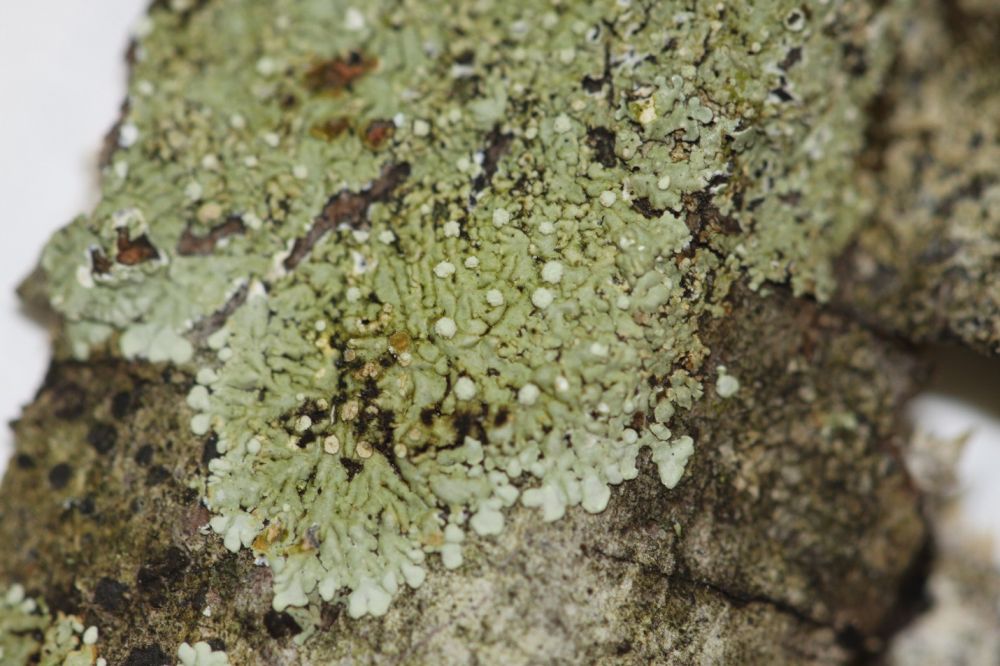 |
Graphis sp.
Habitat: In NATL, this species is found in xeric to hydric hardwood forests.
Key Characteristics: This is a white crustose lichen, with large black lirellae (modified apothecia) that resemble letters or lines. Note: this specimen looks greenish because the green algae is bleaching out.
Cool Fact: Scientists have found many new species in this genus, and there are most likely species new to Florida still to be found. |
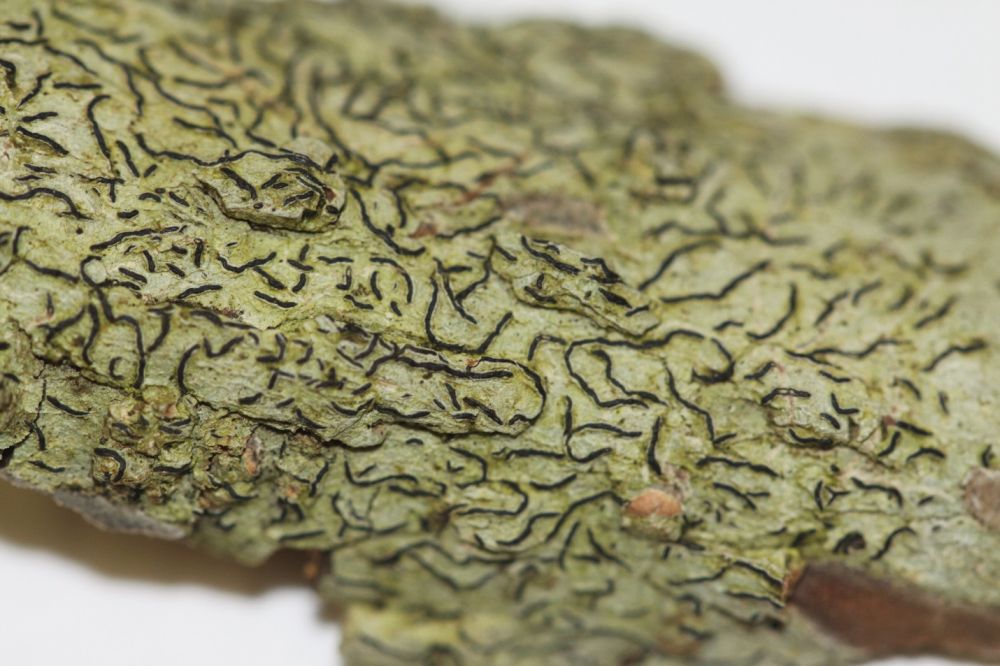
|
Heterodermia albicans
Habitat: In NATL, this species is found on branches of hardwood trees in the mesic and hydric forests.
Key Characteristics: This small foliose lichen can be difficult to distinguish from other small lichens. However it has white rhizines, and a white underside. Other small lobed lichens including Physcia sorediosa and Pyxine eschweileri are at least partially black on their lower side. Heterodermia albicans also has a K+ yellow turning to red medulla while the other two species do not. |
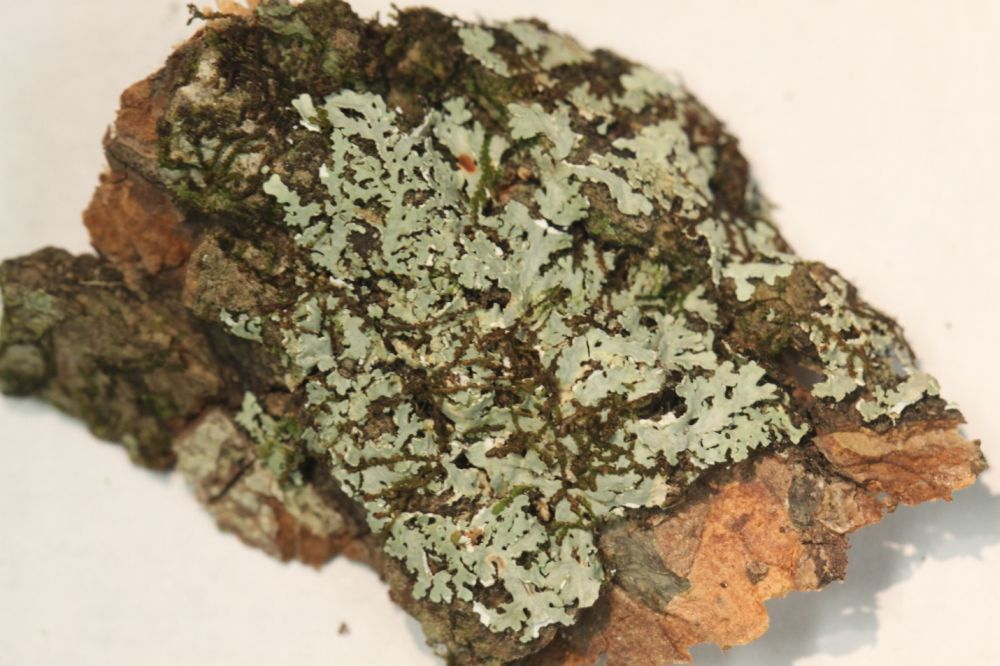 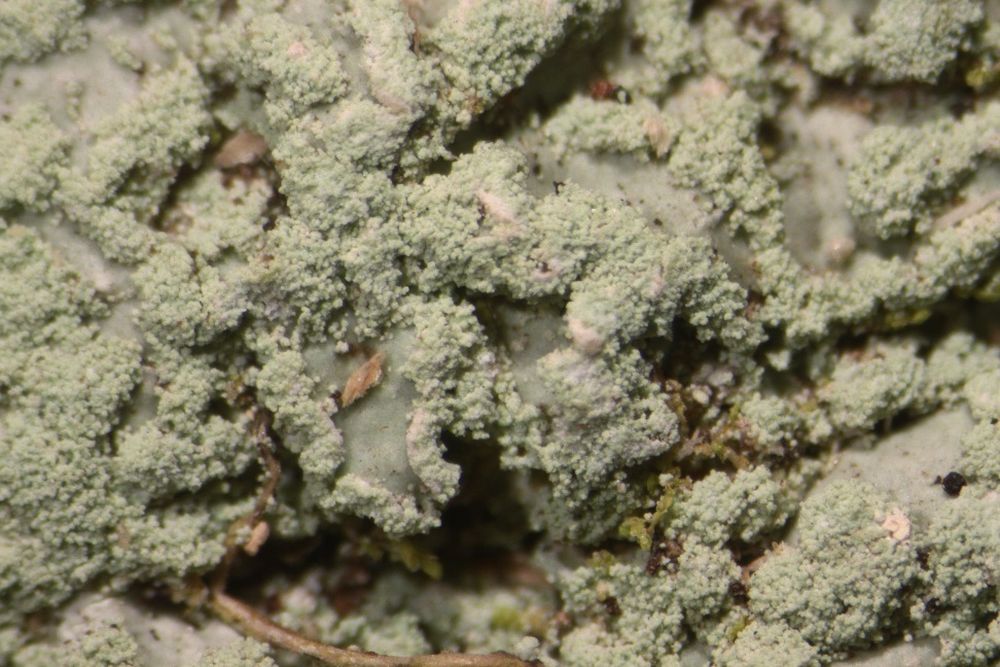
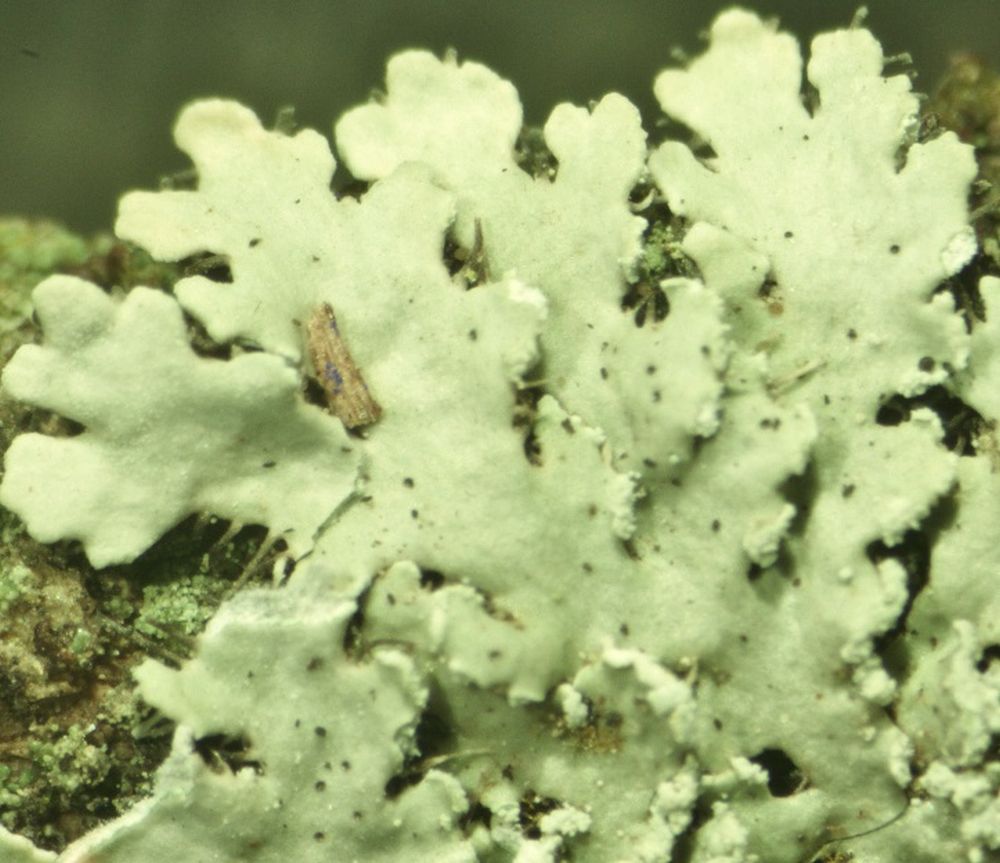 |
Herpothallon rubrocincta (syn: Cryptothecia rubrocincta)
Habitat: In NATL, this species is found occasionally in mesic forests, and is common in hydric forests.
Key Characteristics: This is a crustose lichen with white edges and bright red. These are isidia-like structures that are red.
Cool Fact: The common name of this distinct lichen is Christmas lichen. |
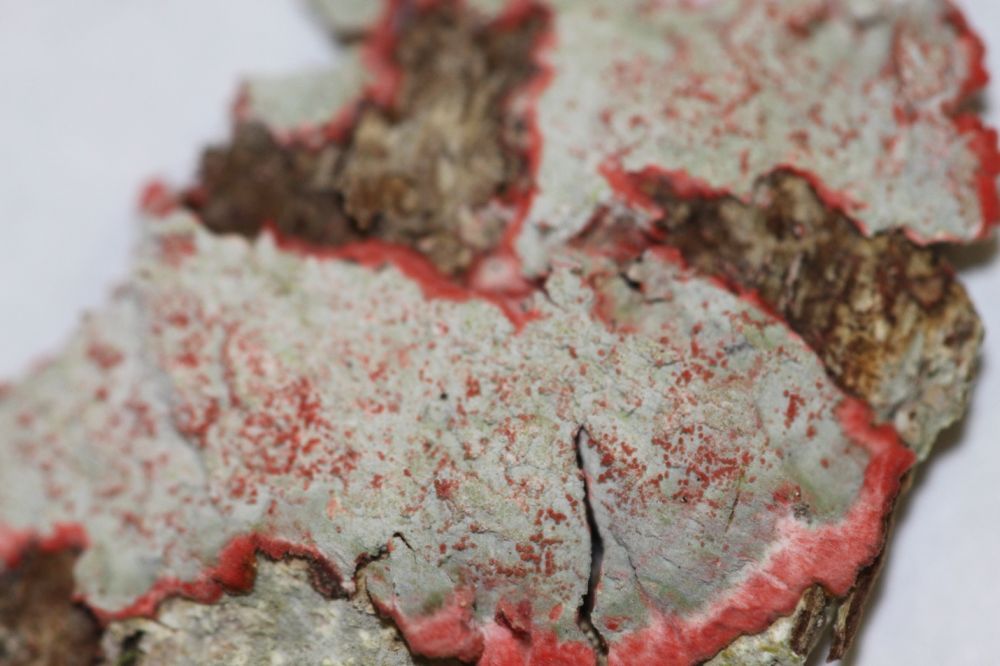 |
Lecanora floridula
Habitat: In NATL, this species is found only in the hydric forest on hardwood trees.
Key Characteristics: This species is a granular crustose lichen similar to Chrysothrix, but with a yellowish green tinge.
Cool Fact: In NATL, this Lecanora species prefers to live in more hydric area. |
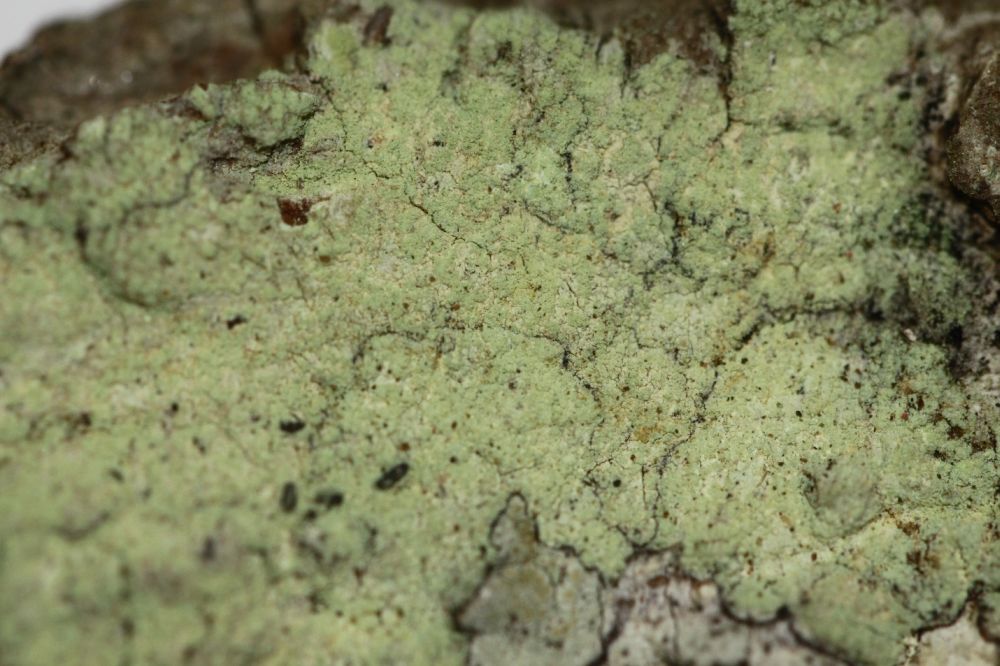 |
Leptogium austroamericanum
Habitat: In NATL, this species is found in mesic and hydric hardwood forest.
Distinct characteristics: This lichen is gelatinous when wet, has isidia, and is weakly wrinkled (need at least 10× magnification to see wrinkles). |
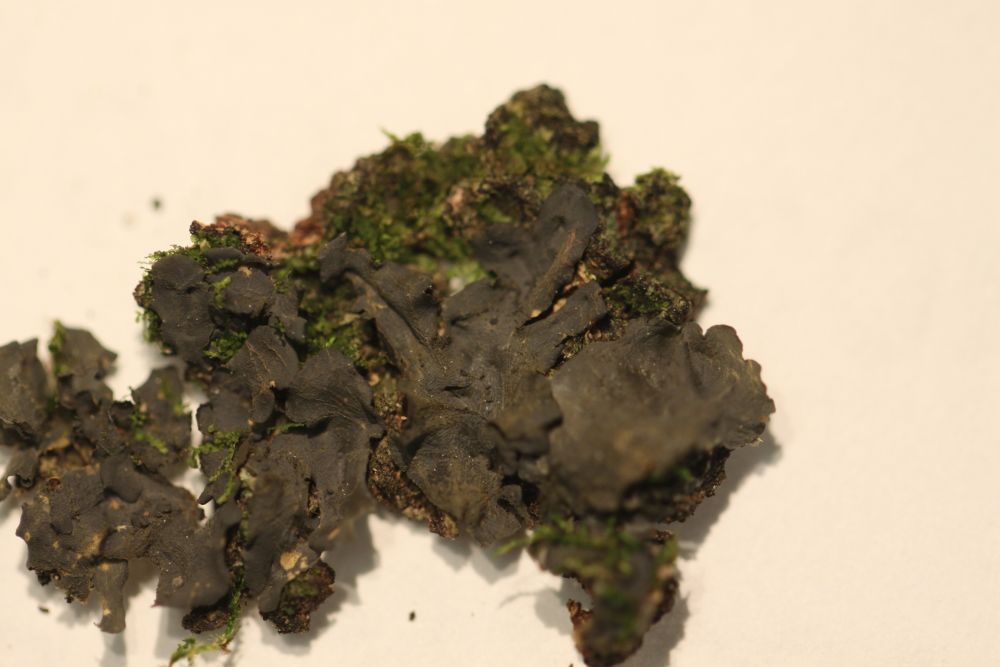 |
Leptogium cyanescens
Habitat: In NATL, this species is found in mesic and hydric hardwood forests.
Distinct characteristics: This species is gelatinous when wet. It also has a smooth thallus that has no wrinkles. Isidia are cylindrical to flat, isidia laminal or marginal.
Cool Fact: This is the most common nitrogen fixing lichen east of the Mississippi River. |
 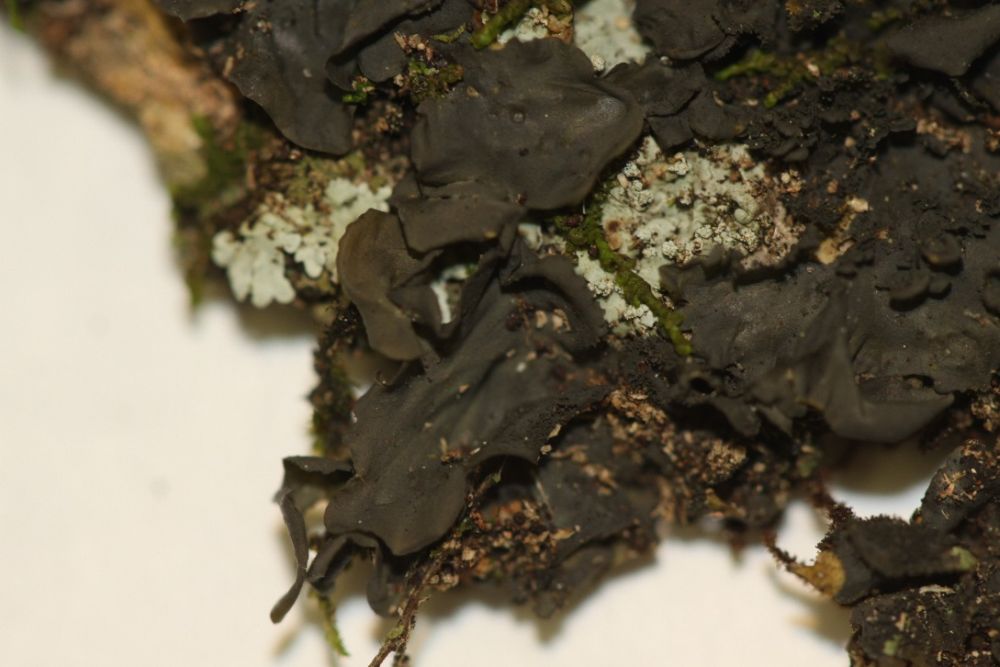
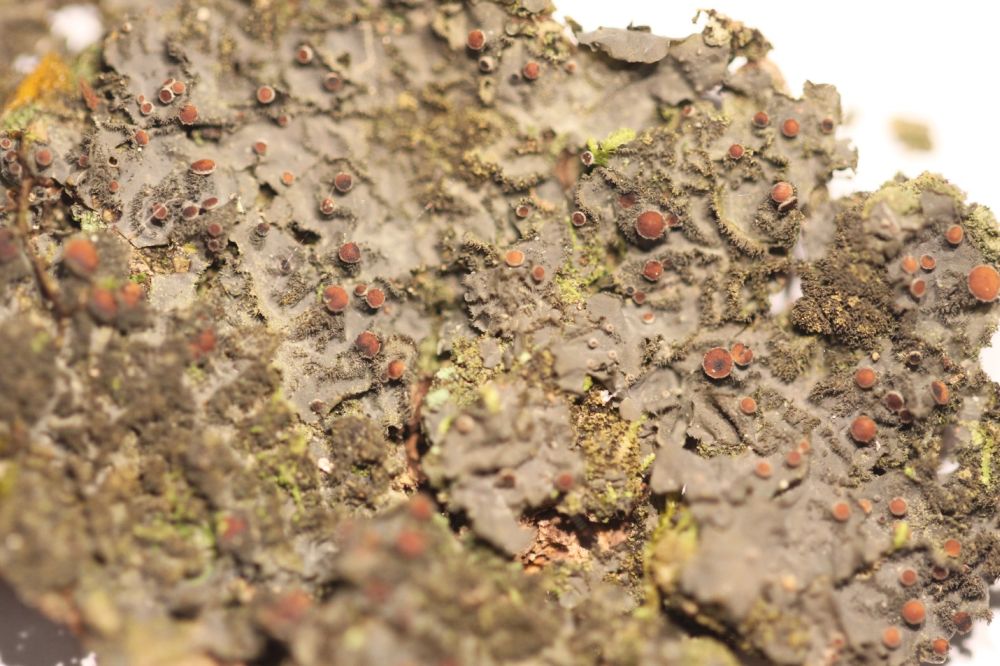 |
Leptogium isidiosellum
Habitat: In NATL, this species is found in mesic and hydric hardwood forests.
Distinct characteristics: This lichen is gelatinous when wet, has isidia, strongly wrinkled usually longitudinally (visible without hand lens), isidia often only on wrinkles.
Cool Fact: Most lichens have a green algal symbiont, but Leptogium species have a cyanobacteria in the genus Nostoc. As a result, these species are able to fix nitrogen! |
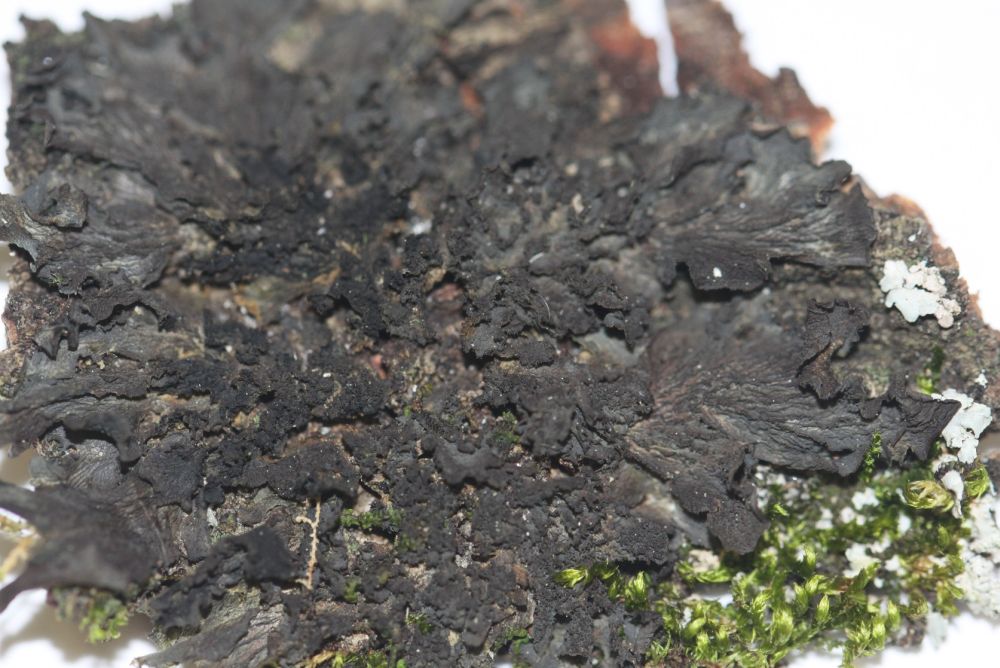 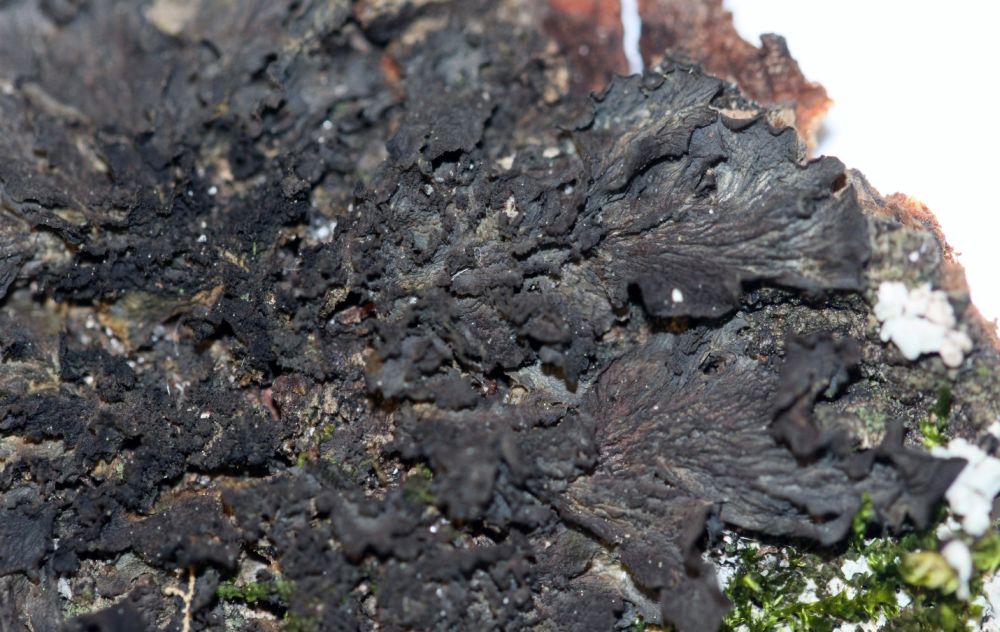 |
Leptogium marginellum
Habitat: In NATL, this species is found in mesic and hydric forests.
Distinct characteristics: This species is gelatinous when wet, has a wrinkled thallus and has numerous small isidia only found on the edge of the apothecia.
Cool Fact: Lichens often serve as habitat for other organisms such as tardigrades and assassin bugs. |
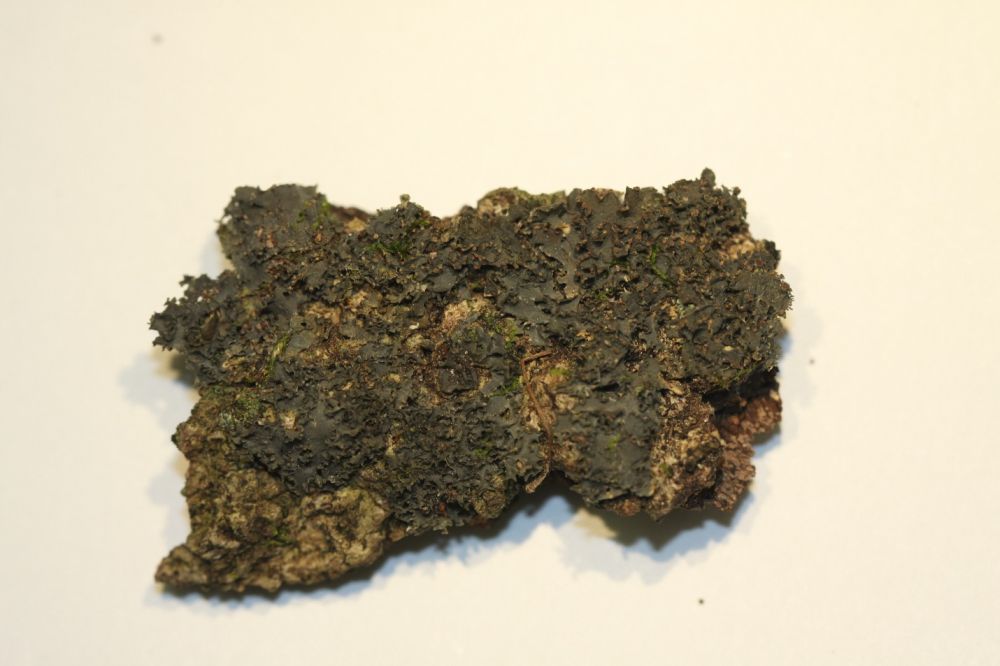 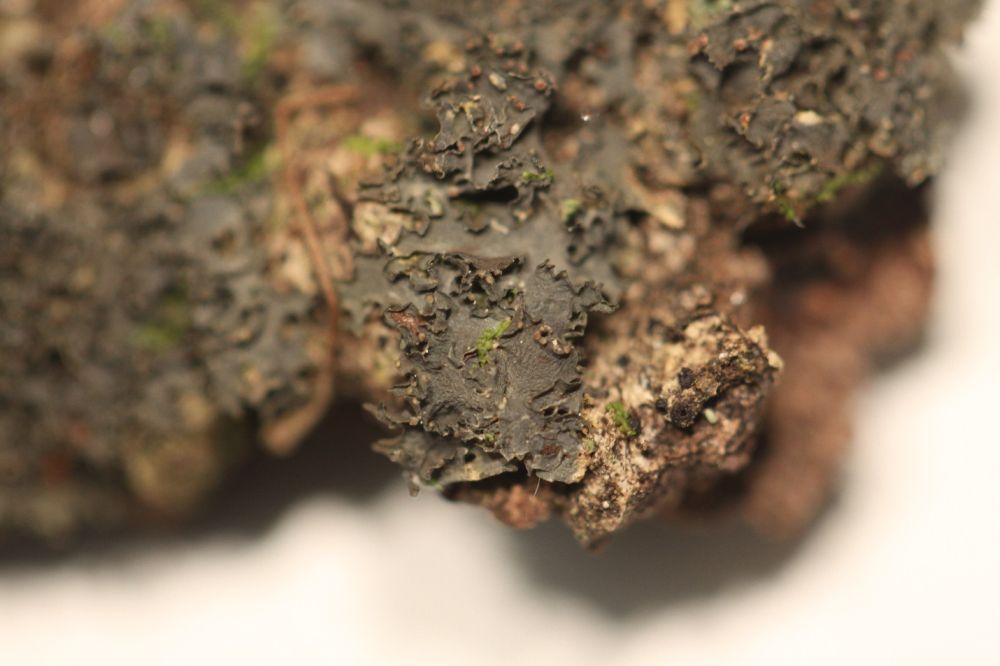 |
Parmotrema cristiferum complex
Habitat: In NATL, this species is found on branches of hardwood trees in the mesic and hydric forests.
Key Characteristics: This complex is the most common sorediate lichen group in NATL. There are four species in the complex. The soredia are linear along the lobe margins. Cilia (hairs) are not present in any species in this complex. |
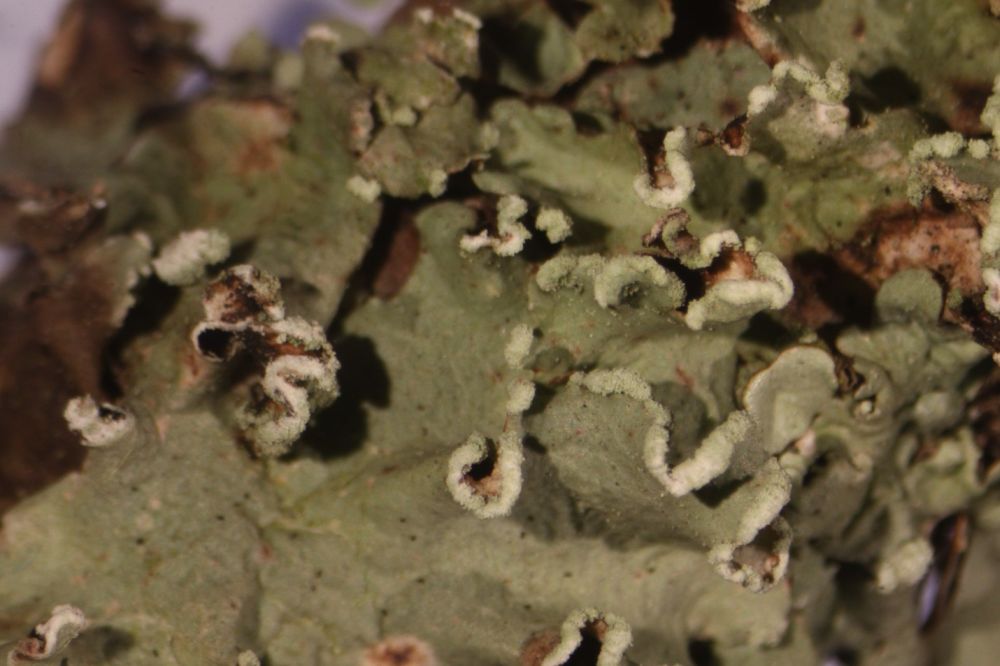 |
Parmotrema perforatum (species complex)
Habitat: In NATL, this species is found on branches of hardwood trees and Pinus in the mesic and most likely hydric forests.
Key Characteristics: The large broad lobes, presence of dark cilia (hairs) on the lobe margins and apothecia with perforations are unique to this species complex. The perforations may initially be very small and in the center of the apothecia, but perforations are typically proportional to the apothecia size. There are three species in this complex.
Cool Fact: The small black dots in the first photo are conidiomata (pycnidia), which are asexual fungal reproductive structures. |
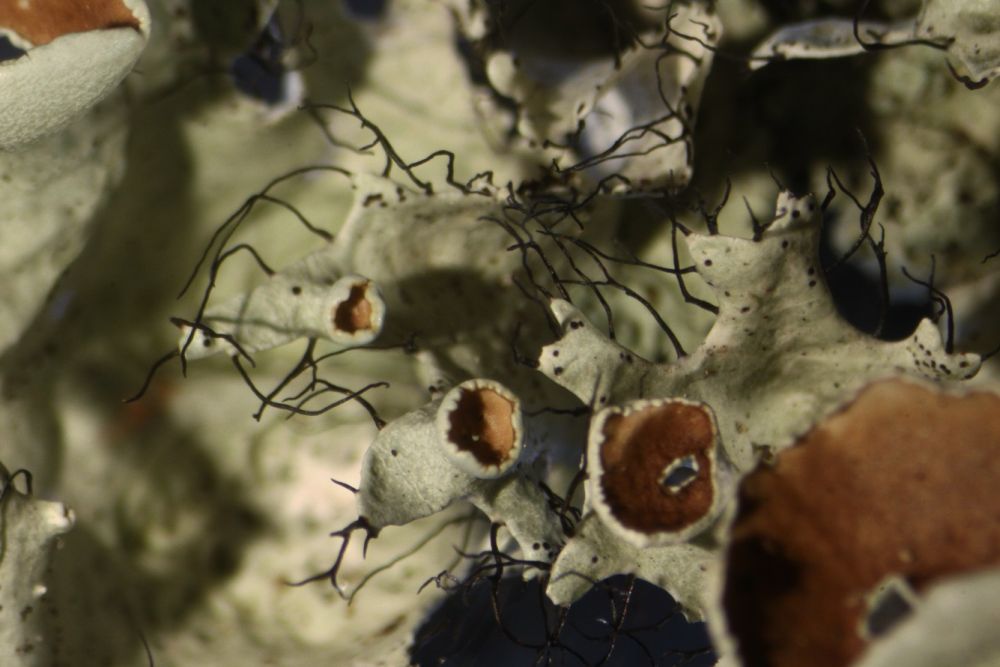 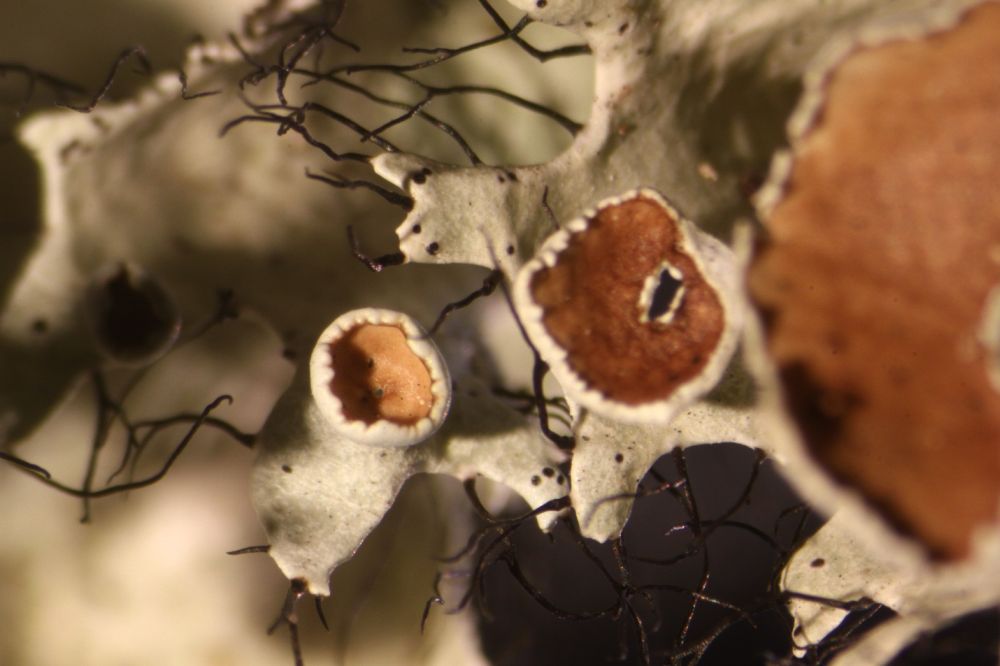 |
Parmotrema rampoddense
Habitat: In NATL, this species is found on branches of hardwood trees in the mesic and most likely hydric forests.
Key Characteristics: This species has large roundish lobes that are sparsely ciliate. It has soredia that are found linearly along the margins (they often appear wavy). This species looks like many other Parmotrema species, but this species has a UV+ bright blue medulla (see left picture). |
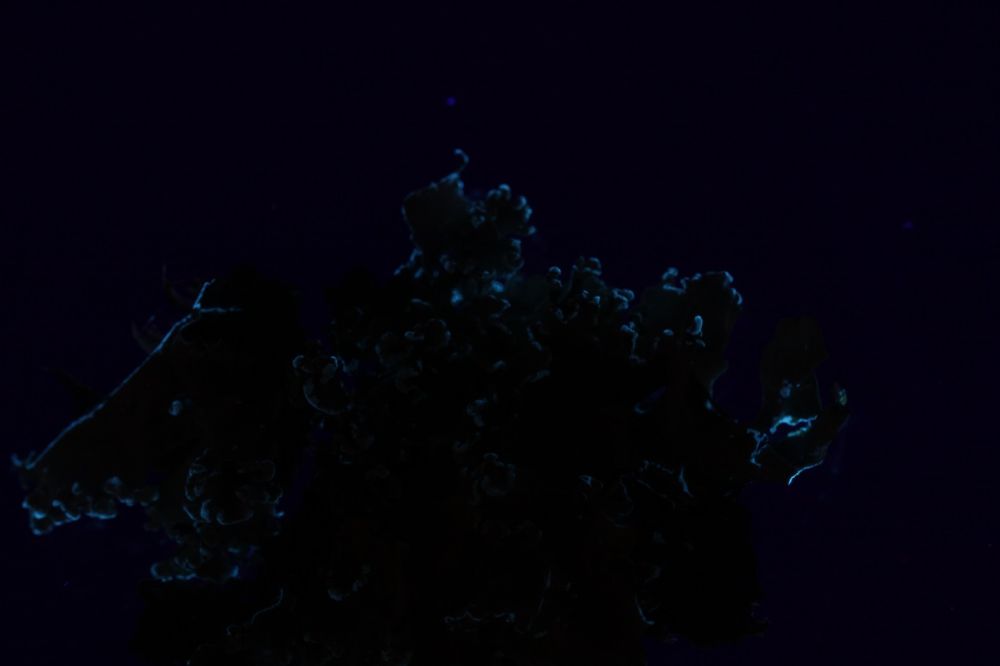 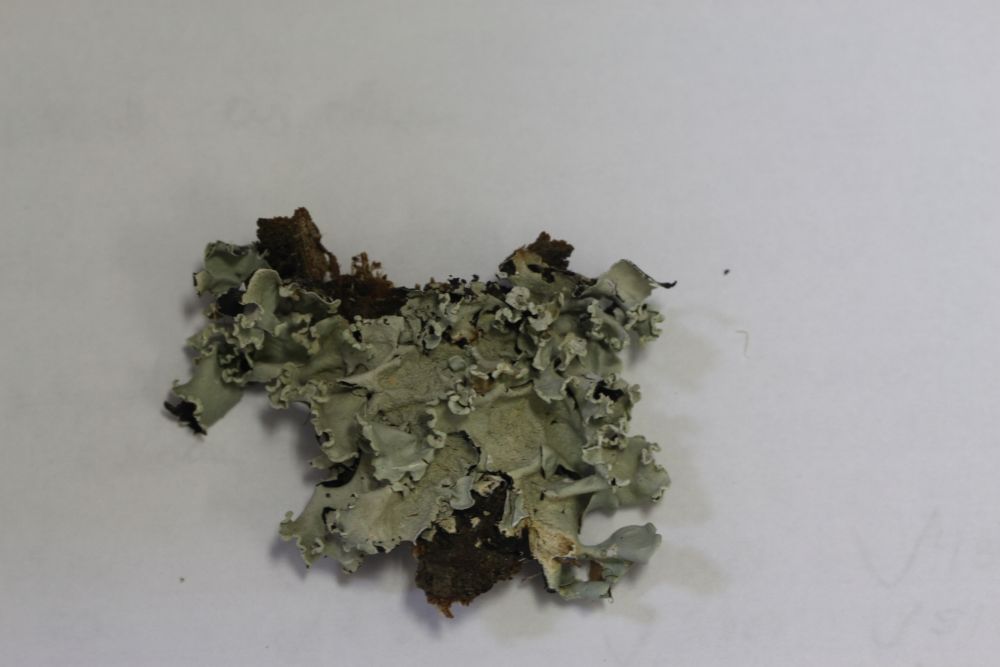 |
Parmotrema reticulatum
Habitat: In NATL, this species is found on branches of hardwood trees in the mesic and most likely hydric forests.
Key Characteristics: This species looks similar to many other Parmotrema species, but it is the only species that has cilia, visible cracks in the cortex, maculae, and is sorediate. It also has soredia that are orbicular. Notice the K+ red spot test in the left picture. |
 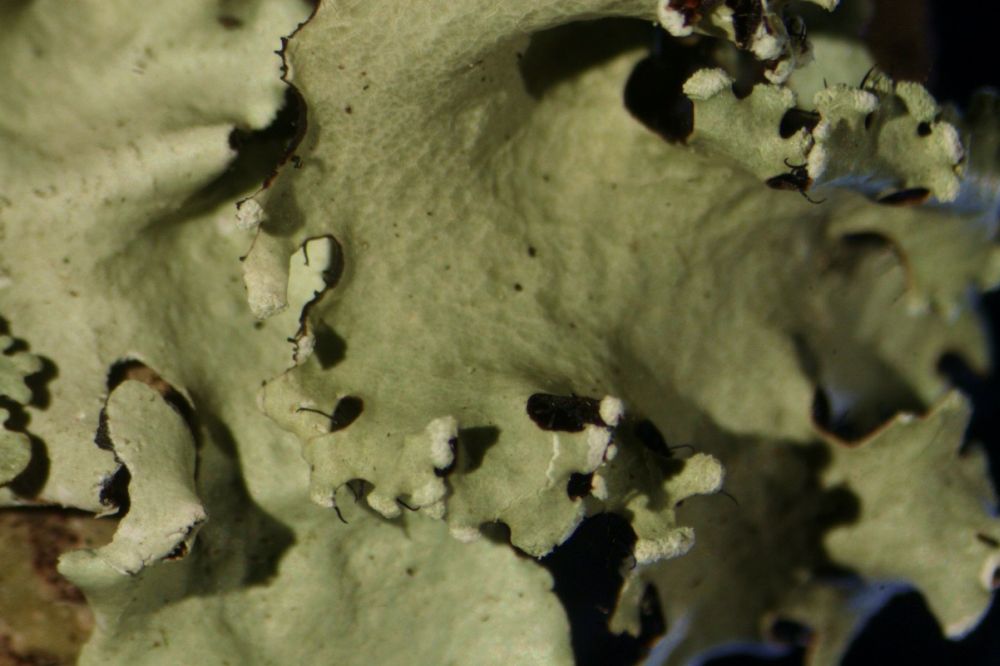
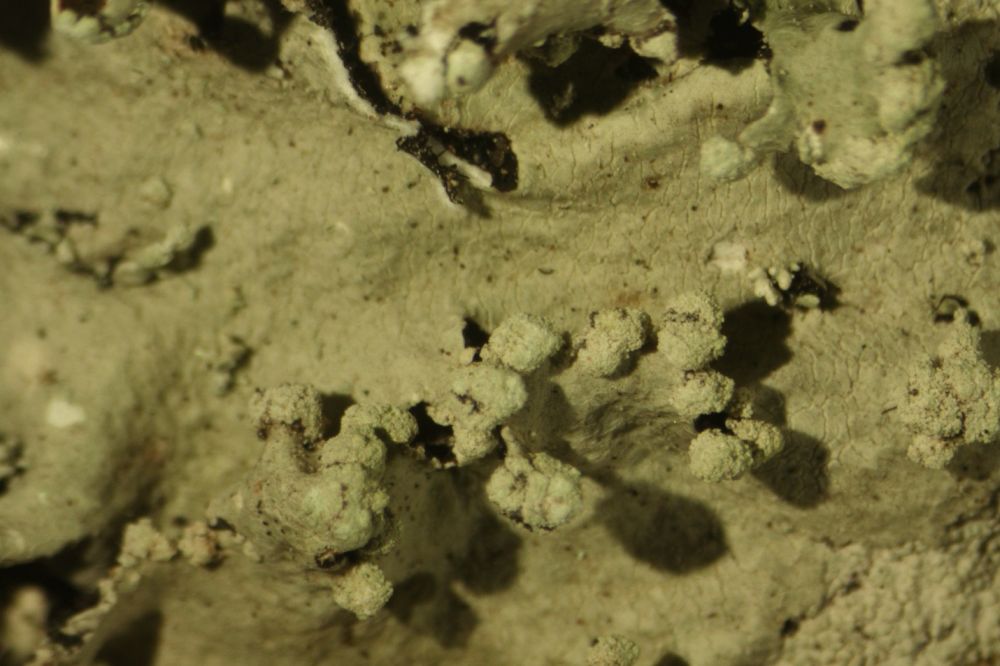 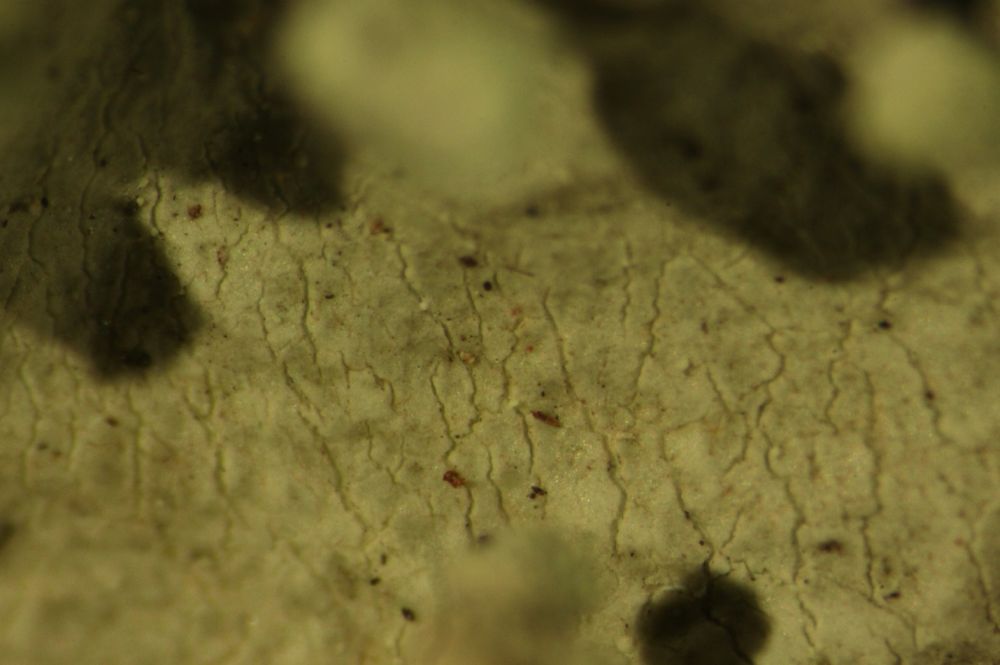 |
Parmotrema tinctorum
Habitat: In NATL, this species is very common in upland mesic and xeric hardwood and Pinus forests and occasionally in hydric forests.
Distinct characteristics: This species is a large foliose lichen with light greenish gray thallus. Isidia are common.
Cool Fact: This is one of the most common Parmotrema species in Florida. There are approximately 25 species known from the state. |
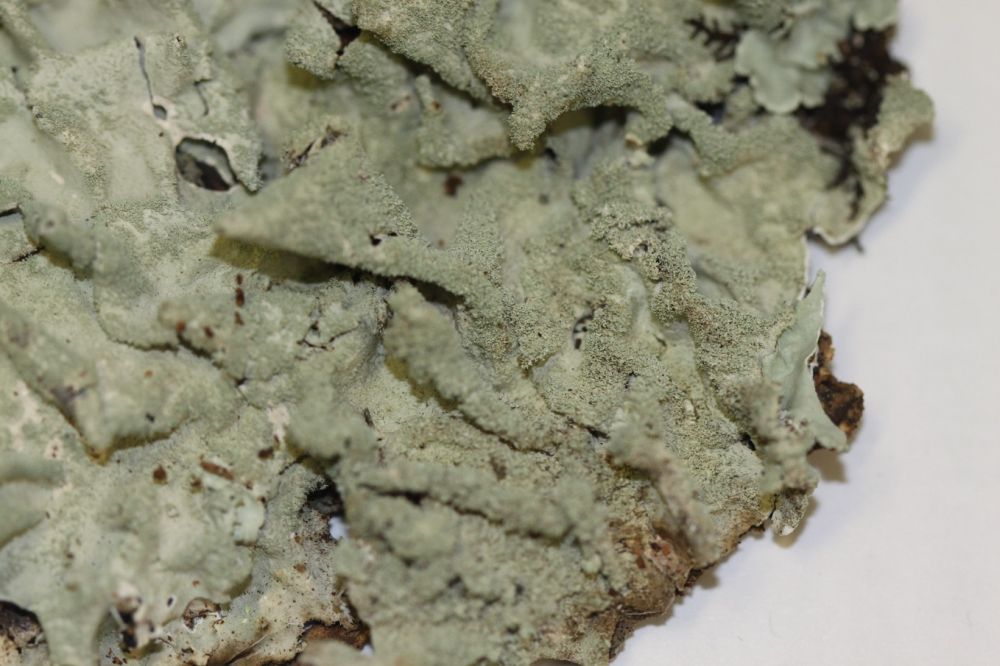 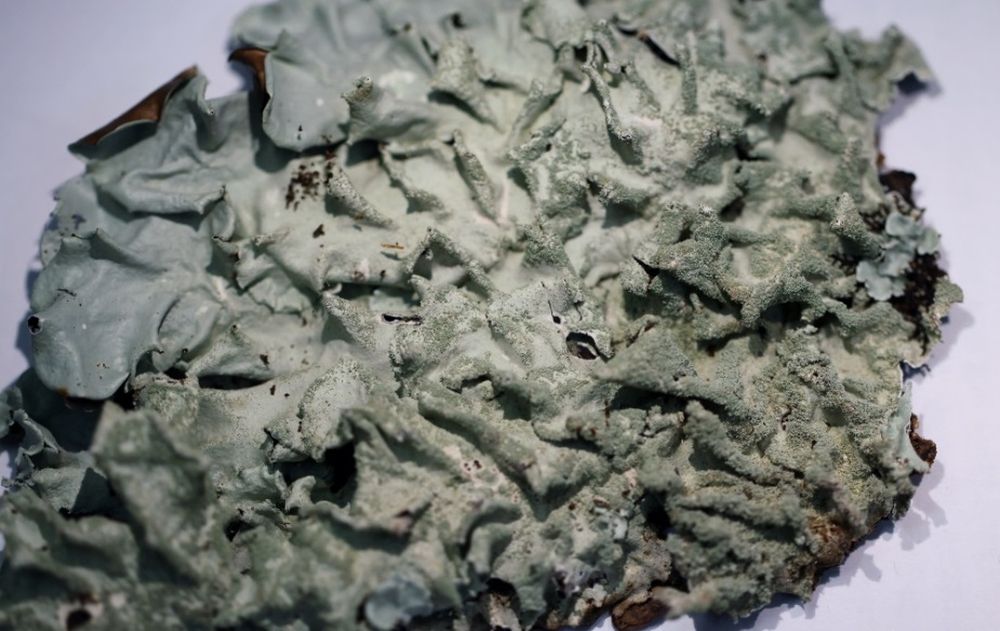
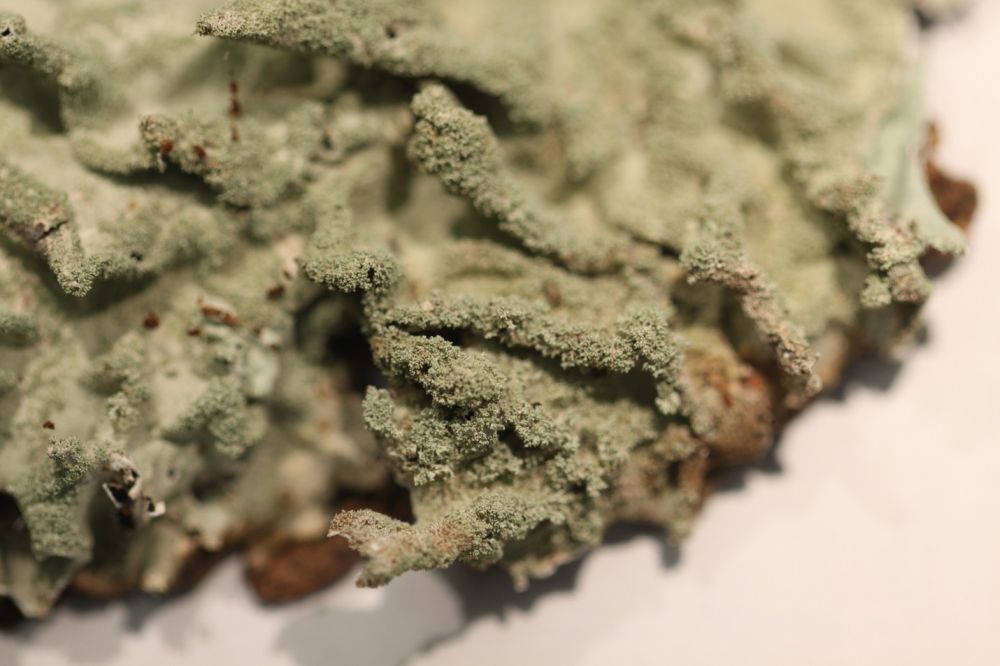 |
Physcia sorediosa
Habitat: In NATL, this species is found on branches of hardwood trees in the mesic forests.
Key Characteristics: This is a small sorediate species that has a mostly dark lower side, but the margin is white. This could resemble Heterodermia albicans due to lobe shape and size, but H. albicans has an entirely white lower side. |
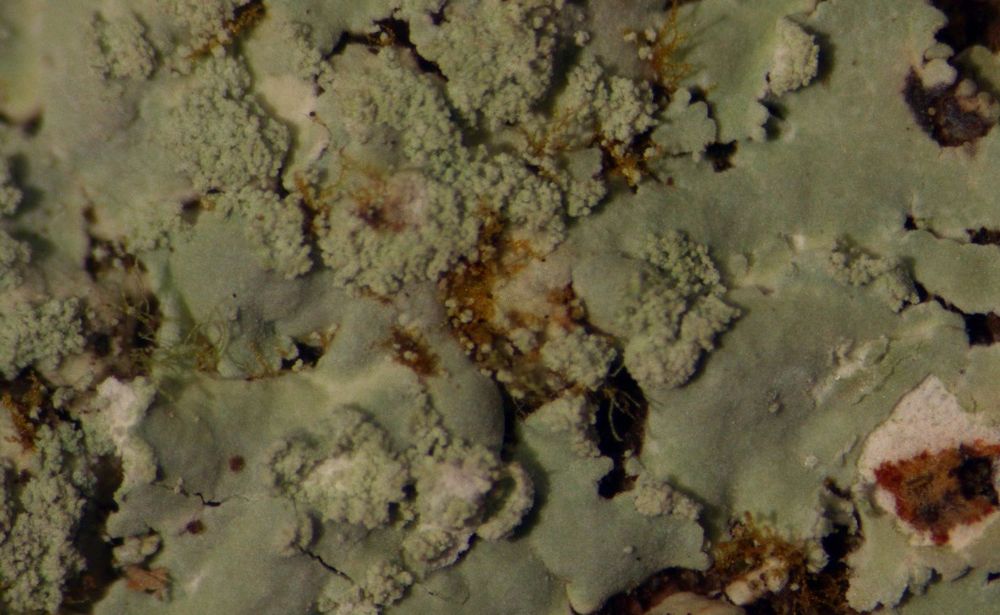 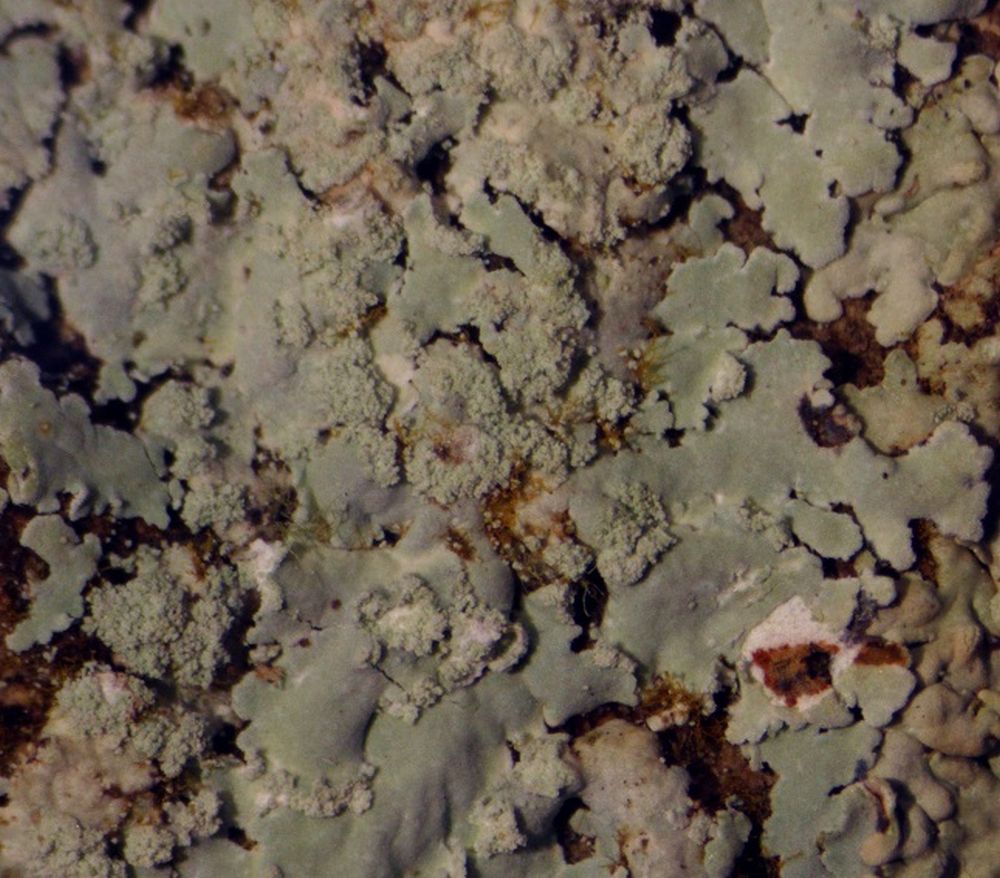 |
Pyxine eschweileri
Habitat: In NATL, this species is found on branches of hardwood trees in the hydric forests and most likely the mesic forests.
Key Characteristics: This species looks like a Dirinaria or Physcia but has a mostly white lower side and soredia that are pustulate. Also this is the only species in the key that has a slightly orangish colored middle layer (medulla). |
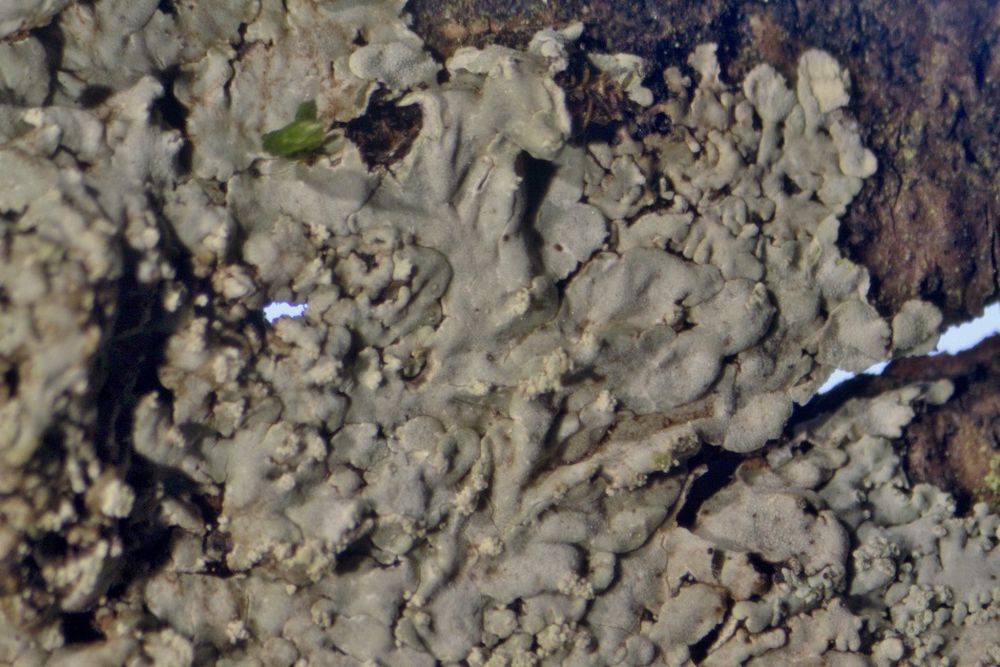 |
Ramalina montagnei
Habitat: In NATL, this species is found on branches of hardwood trees in the mesic and hydric forests.
Key Characteristics: Fruticose lichen that has smooth, flattened branches with white striations. This species looks very similar to R. stenospora which may also be present in NATL. The difference is that R. stenospora does not have white striations. |
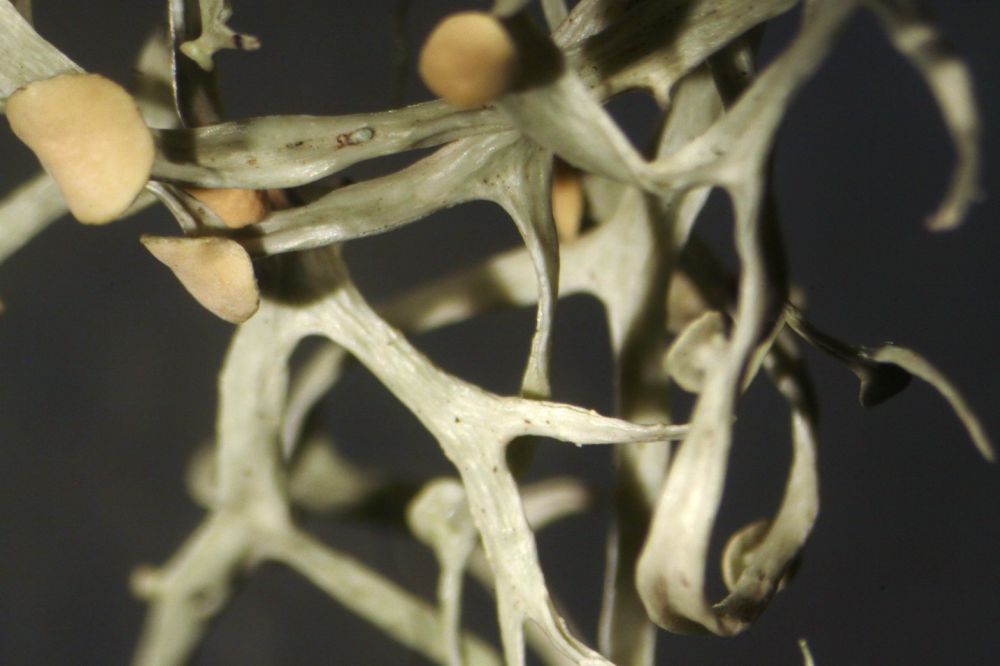 |
Usnea strigosa
Habitat: In NATL, this species is found on fallen branches in mesic and hydric habitats; it is abundant along the SEEP Trail.
Key Characteristics: This is a fruticose lichen with numerous perpendicular branchlets. The apothecia are green flattened spheres that have hairs attached to their edges. This genus could superficially be confused with Ramalina however Usnea has a central cord (see bottom picture).
Cool Fact: This is the most common fruticose lichen at NATL. |
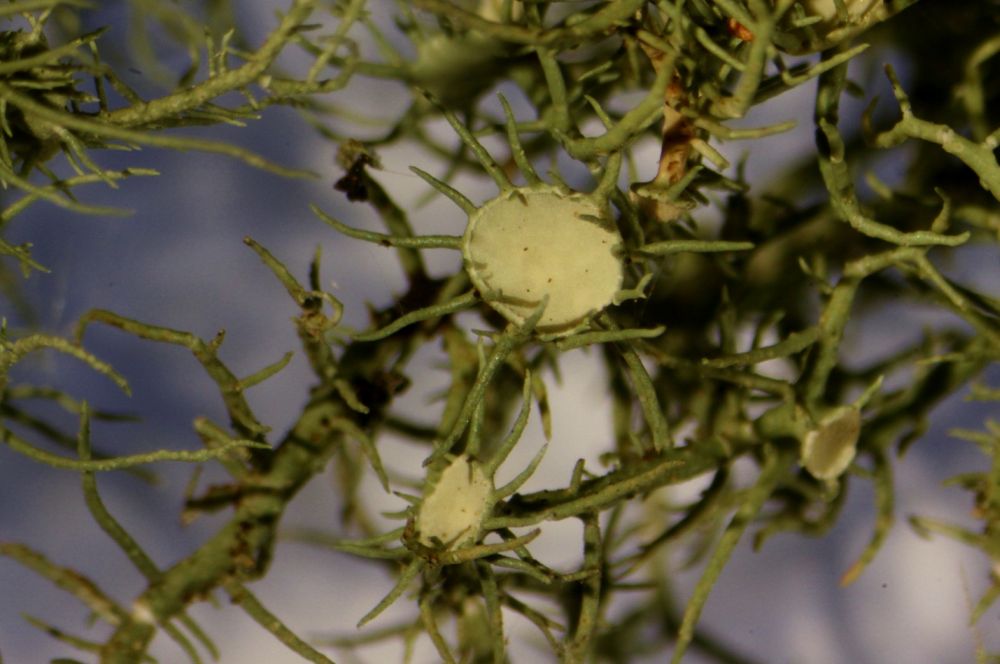 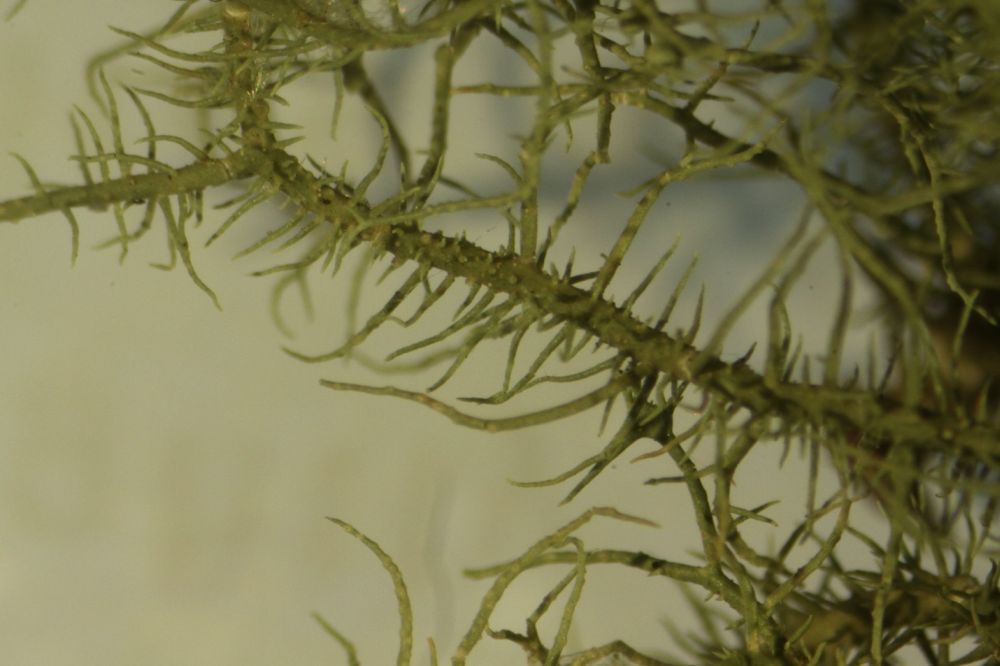
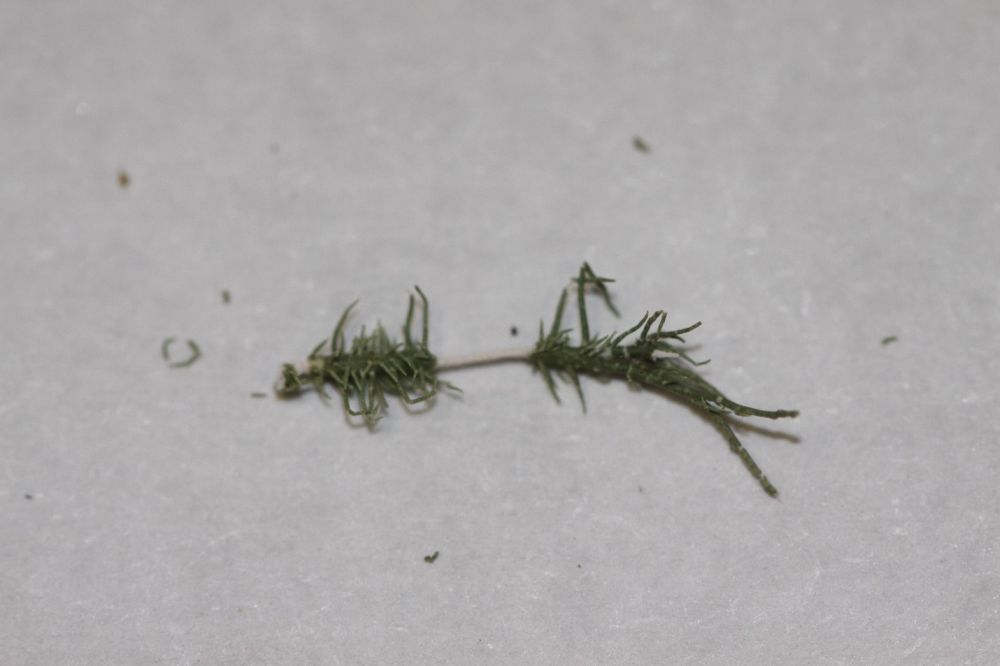 |




















































